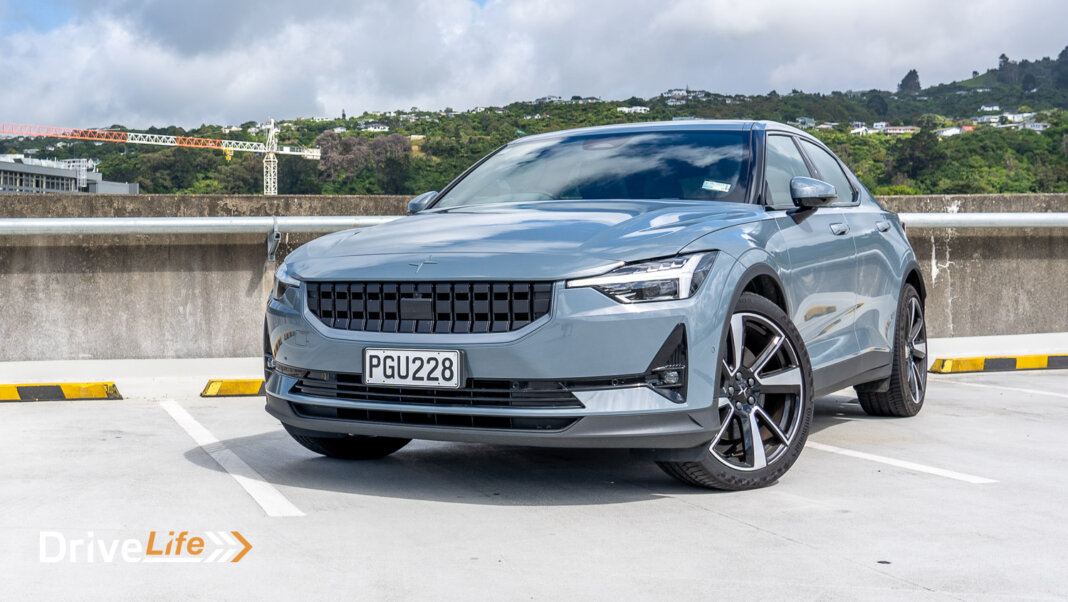It’s that EV you seem to see driving everywhere, and you like it. There’s something about the design of the Polestar 2 that everyone appreciates, and companies like SIXT and MEVO having them for hire is certainly helping with the visibility of the car.
Adding to that public visibility, the Polestar 2 has been selected to be in the top ten for New Zealand Car Of The Year, which is being announced in February. What are DriveLife’s thoughts on the Polestar 2? Is it all looks and little else? We spent two weeks and 900km behind the wheel to find out if the Swedish EV is as good as we hope it to be.
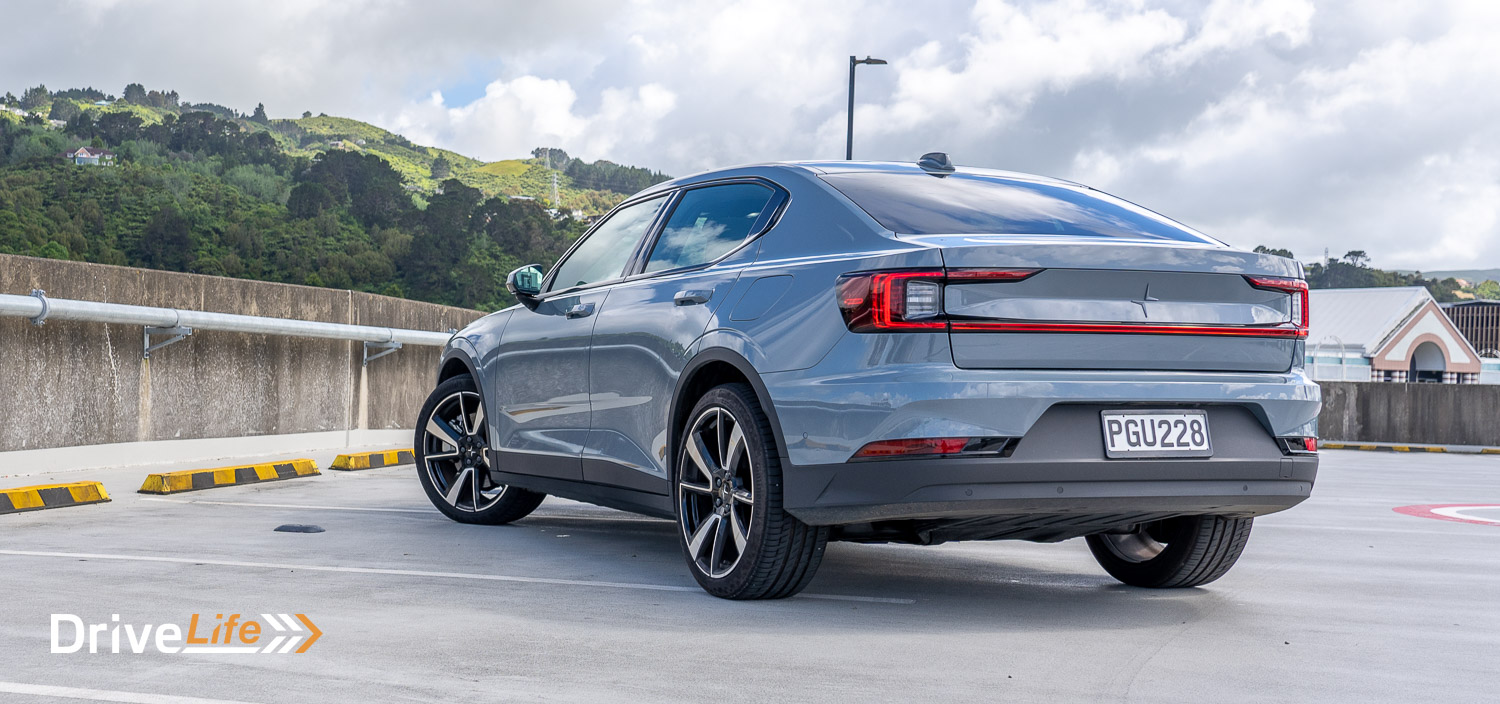
What We Like and Dislike About The 2022 Polestar 2 Long Range Dual Motor
| What we like | What we don’t like |
| Ease of EV driving – no start button Performance Grip Handling One-pedal drive is perfect Build quality Minimalist interior Seat comfort Driving position Gear lever design and use Headlight performance | No rear wiper Some ergonomics Transmission hump takes up valuable space Firm ride Cost/features comparison Ventilation |
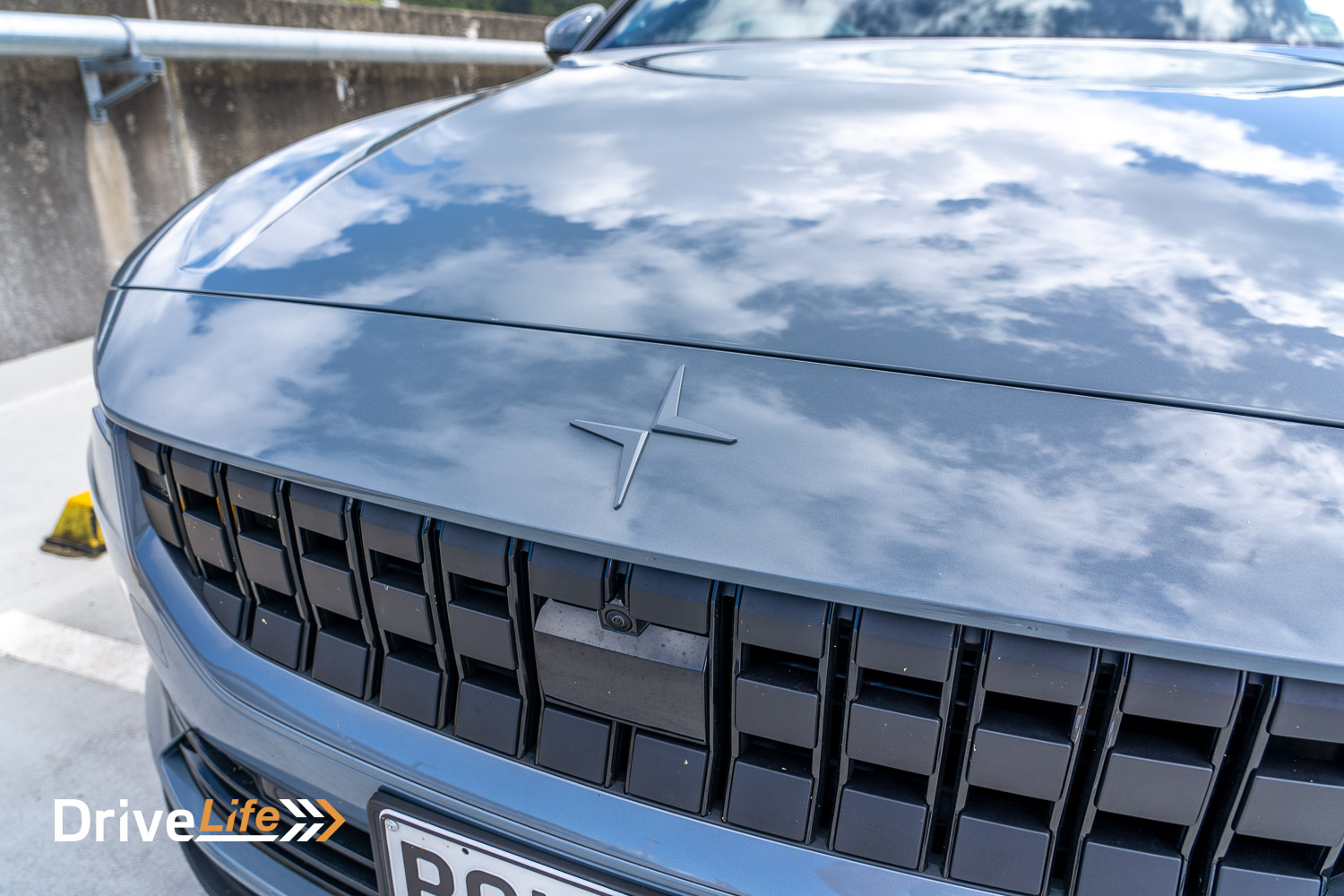
What’s In The 2022 Polestar 2 Range?
There are effectively seven Polestar 2 models to pick from, mixing up the smaller battery (Standard Range) or a bigger battery (Long Range) and then a single or dual electric motor.
Depending on that choice of battery or electric motor quantity, Polestar adds three different packs to the model; Pilot Lite, Plus, or Performance pack. So your choices are:
- Standard Range Single Motor (SRSM)
- Long Range Single Motor (LRSM)
- Long Range Dual Motor (LRDM)
And then add in your option packs.
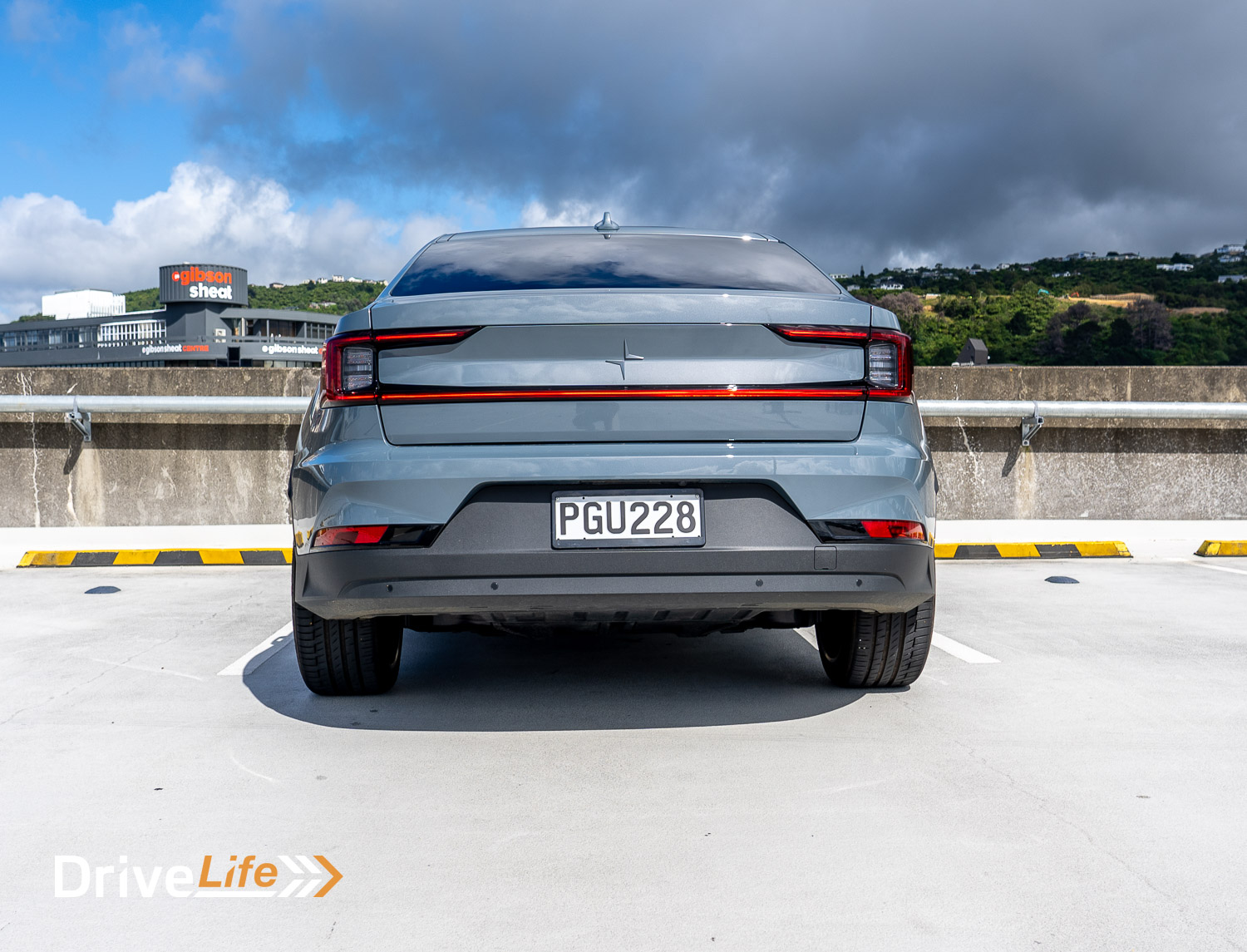
2022 Polestar 2 Pricing
- SRSM – Standard $76,900
- SRSM – Pilot Lite $79,900
- SRSM – Plus & Pilot Lite $86,900
- LRSM – Pilot Lite $86,900
- LRSM – Plus & Pilot Lite $94,900
- LRDM – Plus & Pilot Lite $104,900 (tested)
- LRDM – Performance $114,900 (includes 50kW power upgrade)
The single-motor models put out 170kW of power and 330Nm of torque through the front wheels, while the dual motor manages 300kW and 660Nm through all wheels (AWD). The single motor should get to 100km/h in 7.4 seconds while the dual motor does it in 4.7. The range on the WLTP score is 470km for the single motor standard range, 540km for the long-range single motor, and 480km for the dual motor.
Polestar says the Performance Pack should get to 100km/h in 4.4 seconds, from its 350kW of power.
Battery pack sizes are 69kWh for the Standard Range and 78kWh for the Long Range. According to Polestar, it takes around 40 minutes to change from 20% to 80% on a public fast charger.
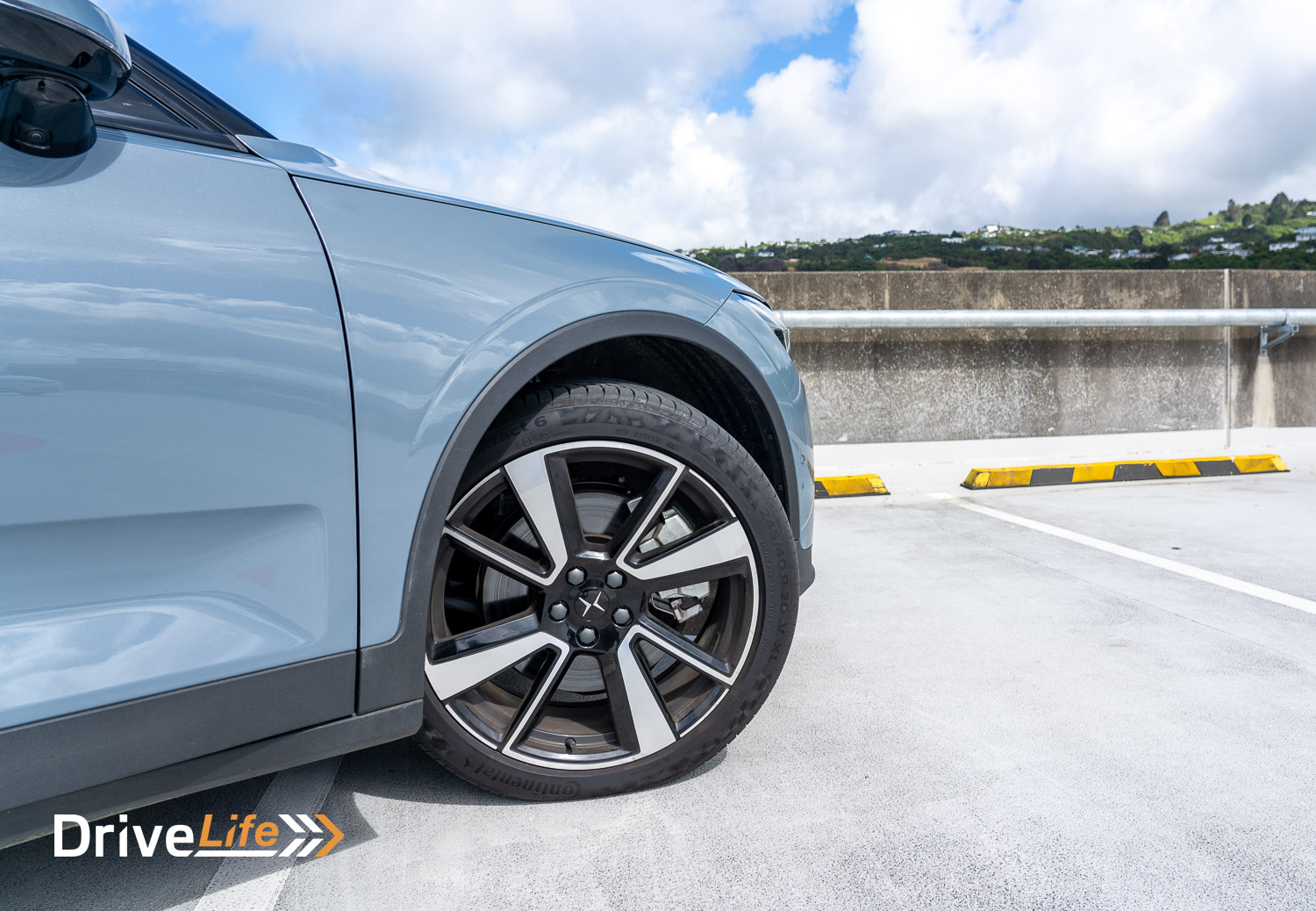
2022 Polestar 2 Equipment Highlights
There are no option packs added to the base model Polestar 2, but as standard, it does have:
- LED Headlights
- Adaptive Rear LED Lights
- Frameless Automatically Dimmer Interior Mirror
- Embossed Textile Seats (Charcoal or Zinc)
- Power Seats w/ 4 Way Lumbar Support
- Heated Front Seats
- Over-The-Air Updates
- Android-Powered Infotainment System
- Automatic Kerb Lowering Mirrors
- Polestar App
- Polestar Digital Key
- Polestar Connect
- Apple CarPlay
- Park Assist Front & Rear
- Rear Park Assist Camera
- Handsfree Power Tailgate
- 19″ 5-V Spoke Black Diamond Cut Alloy Wheels
- Retractable Exterior Frameless Mirrors
- Rain Sensor
- Dual-Zone Electronic Climate Control
- 4 USB-C Ports
- Standard Safety Assistance
- Collision Avoidance & Mitigation
- Run Off Road Mitigation
- Forward Collision Warning
- Lane Keeping AssistPost Impact Braking
Moving up to the next model adds the Pilot Lite pack, which includes:
- Adaptive cruise control
- Emergency Stop Assist
- Blind Spot Monitoring with steer assist
- Cross-traffic alert
- Rear Collision Warning & Mitigation
- 360 Camera
- Park Assist Side
- Pixel LED Headlights
- Light sequences
- LED front fog lights with cornering lights
- Automatically dimming exterior mirrors
The Plus Pack then adds:
- Fixed panoramic sunroof
- WeaveTech seats
- Heated rear seats, steering wheel and wiper blades
- A Harmon-Kardon Premium sound system with 13 speakers
- Wireless Smartphone charging
- Rear floor ‘lid in lid’ with bag holder
- Manual cushion extension
- Heat pump air conditioning
At the top of the Polestar 2 range is the Performance Pack, which adds:
- 50kW Performance Upgrade Software
- Ohlins Dual Flow valves shock absorbers
- Gold Brembo 4-piston alloy front callipers
- Performance summer tyres
- Gold seat belts
- High gloss black roof segment
- 20” forged alloy wheels
- Gold valve caps
Zinc Nappa leather is available on all models as a $6,500 option.
Looking at the above specs, it’s still pretty amazing that you have to option-up to get adaptive cruise control and even a heat-pump air conditioner. Still, such is the cost of getting at least one model down below the magical $80k mark to be eligible for the Clean Car rebate. Regardless, at near-on $80,000 the base model is fairly light on equipment levels. You might notice that no models have automatic parking or a heads-up display.
There are 6 colours to choose from, all muted shades:
- Thunder (grey)
- Magnesium (silver)
- Snow (white)
- Jupiter (light bronze)
- Midnight (mild blue)
- Space (black).
For a full list of specs and options available for the 2022 Polestar 2 Long Range Dual Motor, head over to the Polestar New Zealand website.
How Does The 2022 Polestar 2 Long Range Dual Motor Compare To Its Competition?
All prices below exclude the refund or additional cost of the New Zealand Clean Car Programme.
| Make/ Model | Battery Capacity kW-hr | Power/ Torque kW/Nm | 0-100km/h seconds | Range (WLTP) | Boot Space, litres | Price (excl CCP) |
| Kia EV6 GT Line (AWD) | 77.4 | 225/605 | 5.2 | 484 | 490 | $111,990 |
| Hyundai Ioniq 5 Limited Solar Roof (AWD) | 77.6 | 225/605 | 5.1 | 430 | 537 | $109,900 |
| Polestar 2 Long Range Dual Motor (AWD) | 78 | 300/660 | 4.7 | 480 | 405 | $104,900 |
| Tesla Model 3 Performance (AWD) | 75 | 377/660 | 3.3 | 547 | 561 | $103,900 |
First Impressions Of The 2022 Polestar 2 Long Range Dual Motor
There are few people that dislike this design. Polestar has managed to make this car stand out from any crowd, and it’s easy to pick out a Polestar 2 coming towards you. Happily, there’s no EV weirdness coming into the design of this car. It’s sleek, stylish, and certainly has an executive look about it.
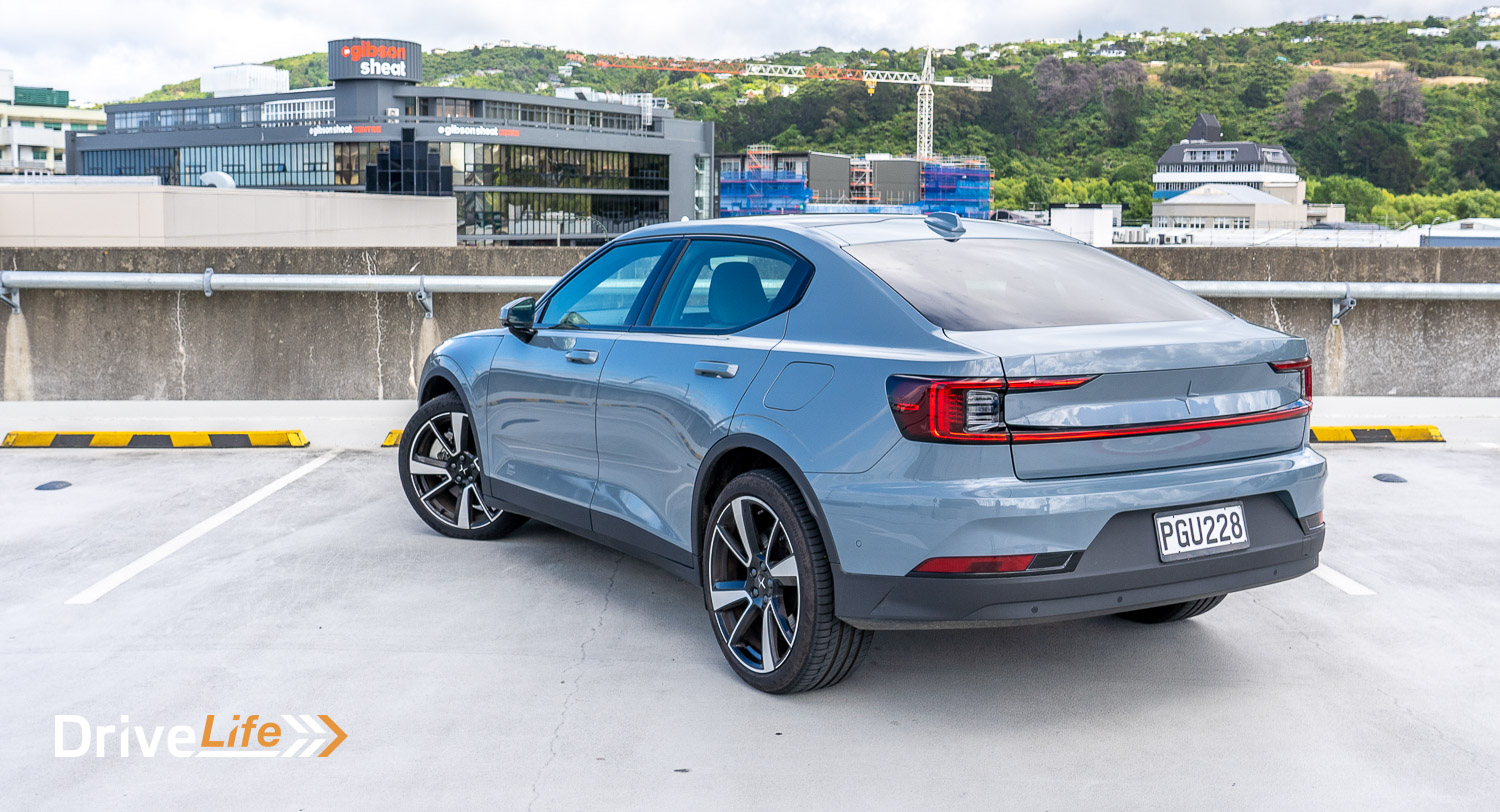
Those Thor’s Hammer adaptive LED headlights look the part, and the frameless mirrors – while really seeming a bit pointless – look quite cool. Having the whole body of the mirror move when you adjust it is something new, but I’m not sure it actually improves anything.
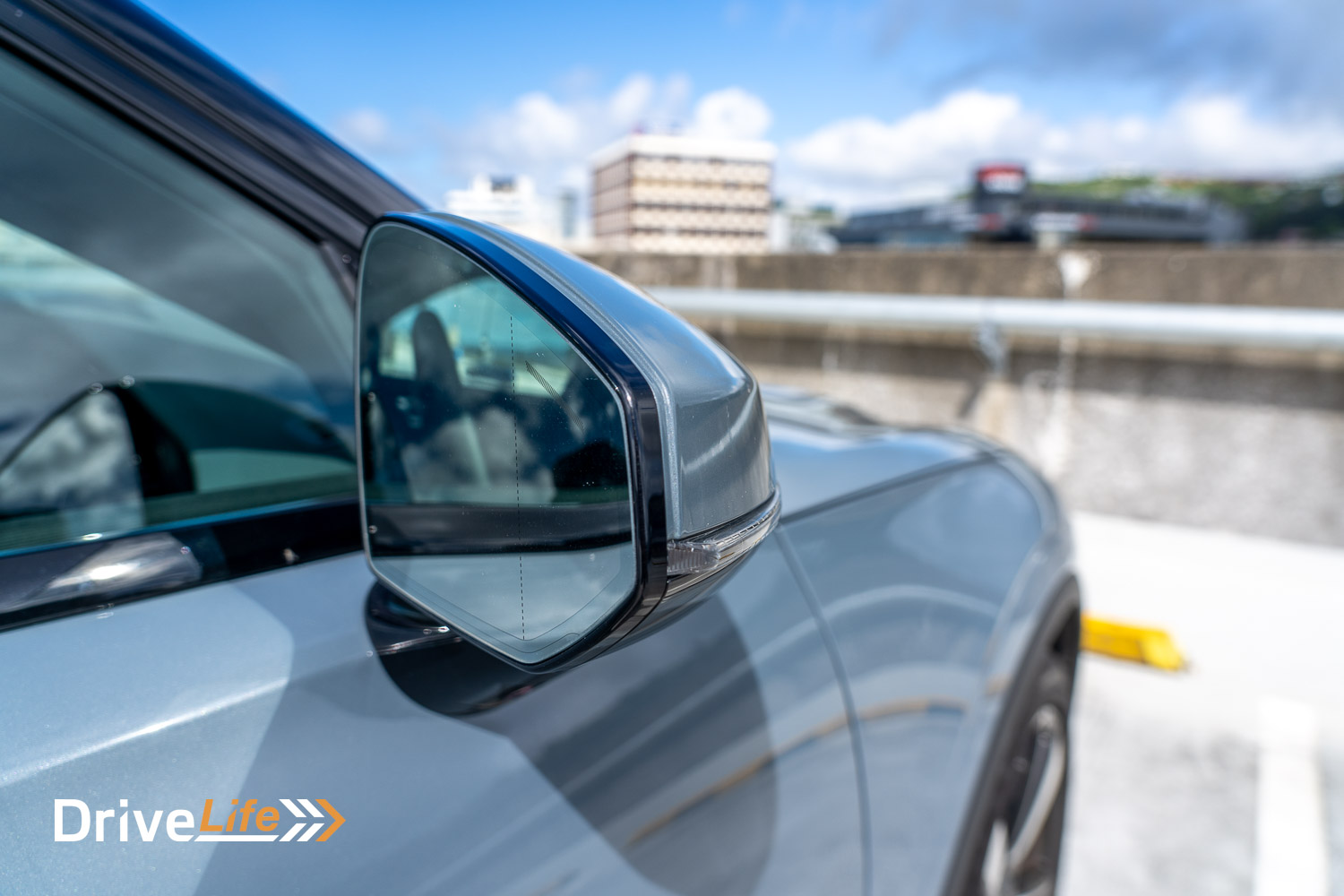
There are perfect shut lines all over this car, something that past Teslas built in the USA might envy. It’s a big car too; based on the Volvo XC40, it’s quite imposing and is bigger in person than in photos. Definitely a large hatchback, and on par in physical size with its nemesis, the Tesla Model 3.
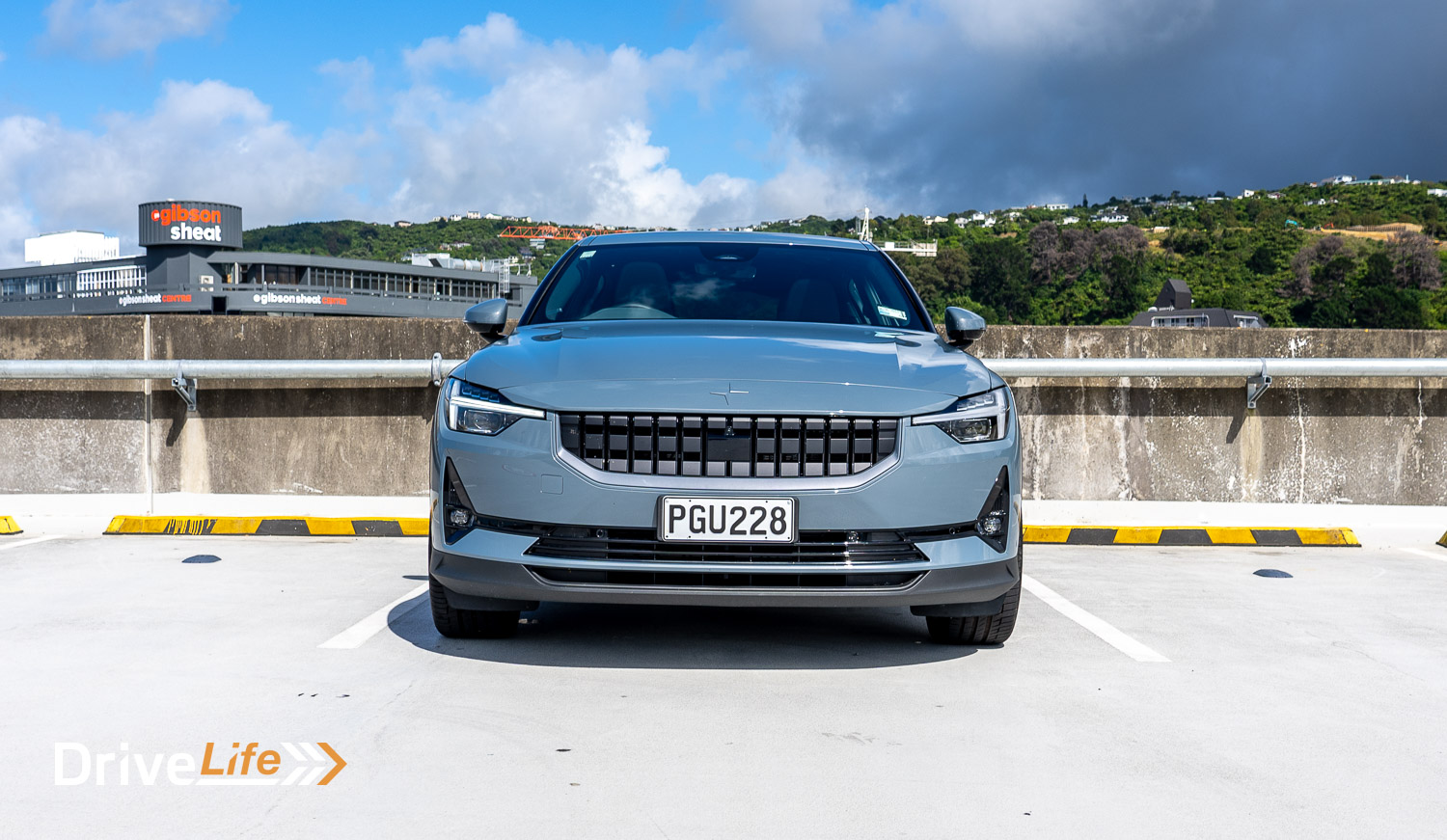
What’s The Interior Like In The 2022 Polestar 2 Long Range Dual Motor?
While getting into the Polestar 2, watch your head. The roofline is low, meaning those of above-average height will need to duck down and under.
The interior, while very clean and mostly uncluttered, is not built to be luxurious. It’s more on the high-tech side of things, with no controls across the front of the dash, and instead, there is that large, 11.5” central screen to control most things. Thankfully, Polestar has included proper hard buttons to defrost the front or rear screens, and a knob to control volume up/down, track/station up/down or pause. That’s much appreciated.
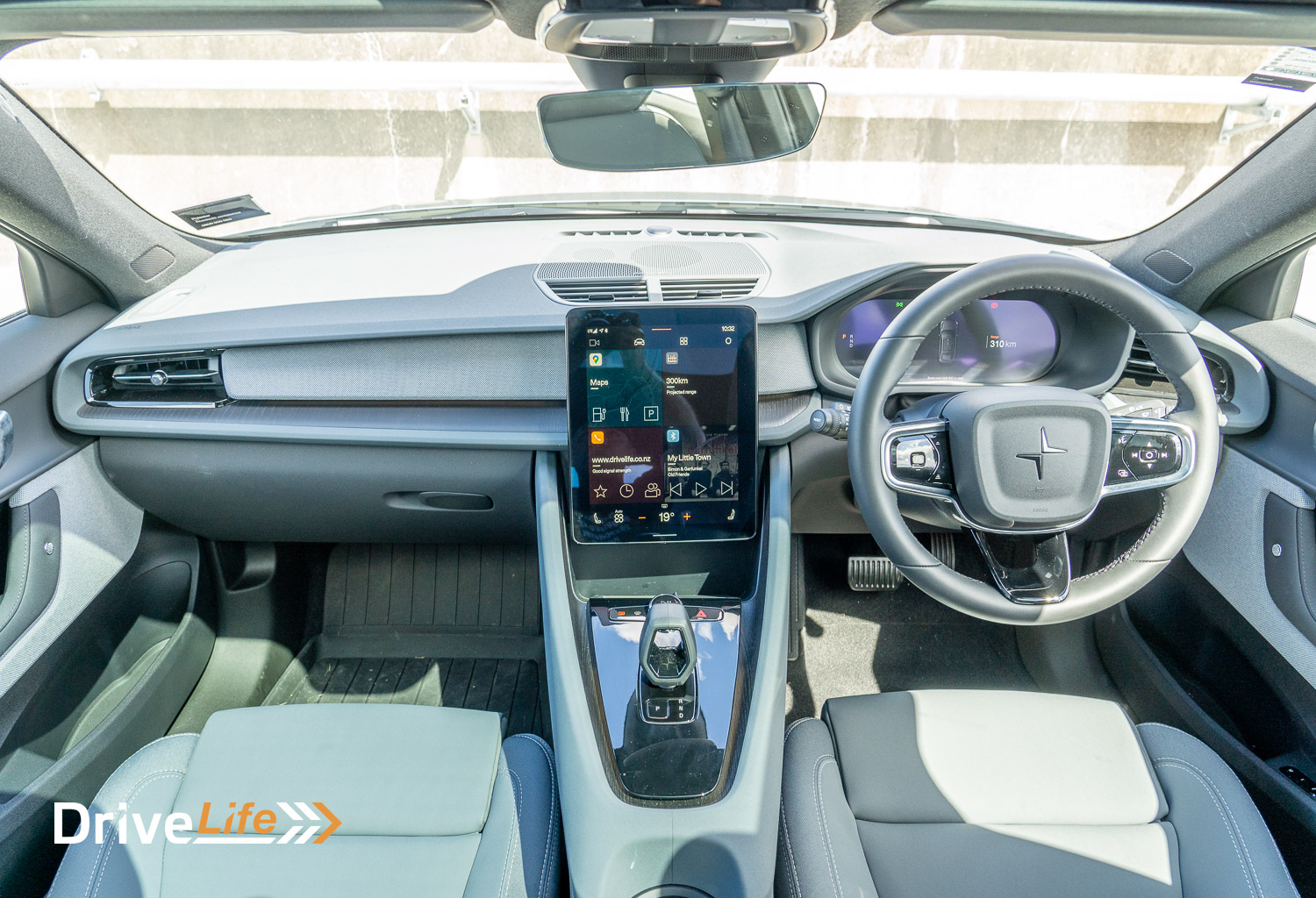
There are some nice fabrics and materials used inside, and the feel of most touch points is a nice experience. Black open-pore wood is used on the dash and centre console, adding a little bit of class. Our test car had the WeaveTech seats that look great, and I expect they suit the modern and almost futuristic interior design better than leather.
There’s a fairly high centre console in this car, a throwback from the Polestar 2 being built from the Volvo XC40 platform, unlike the open centre front in the Kia EV6 and even more so in the Hyundai Ioniq 5. For the reason of being built on an SUV platform, there’s also a hump in the rear floor, using up a lot of valuable foot space for your centre-rear passenger.
That high centre console can make the car feel a bit smaller in the front, and adding to that feeling is the fact that the second cup holder is under the centre console armrest. It’s a long way back to grab your coffee, so definitely only should be used for passengers, to be safe.
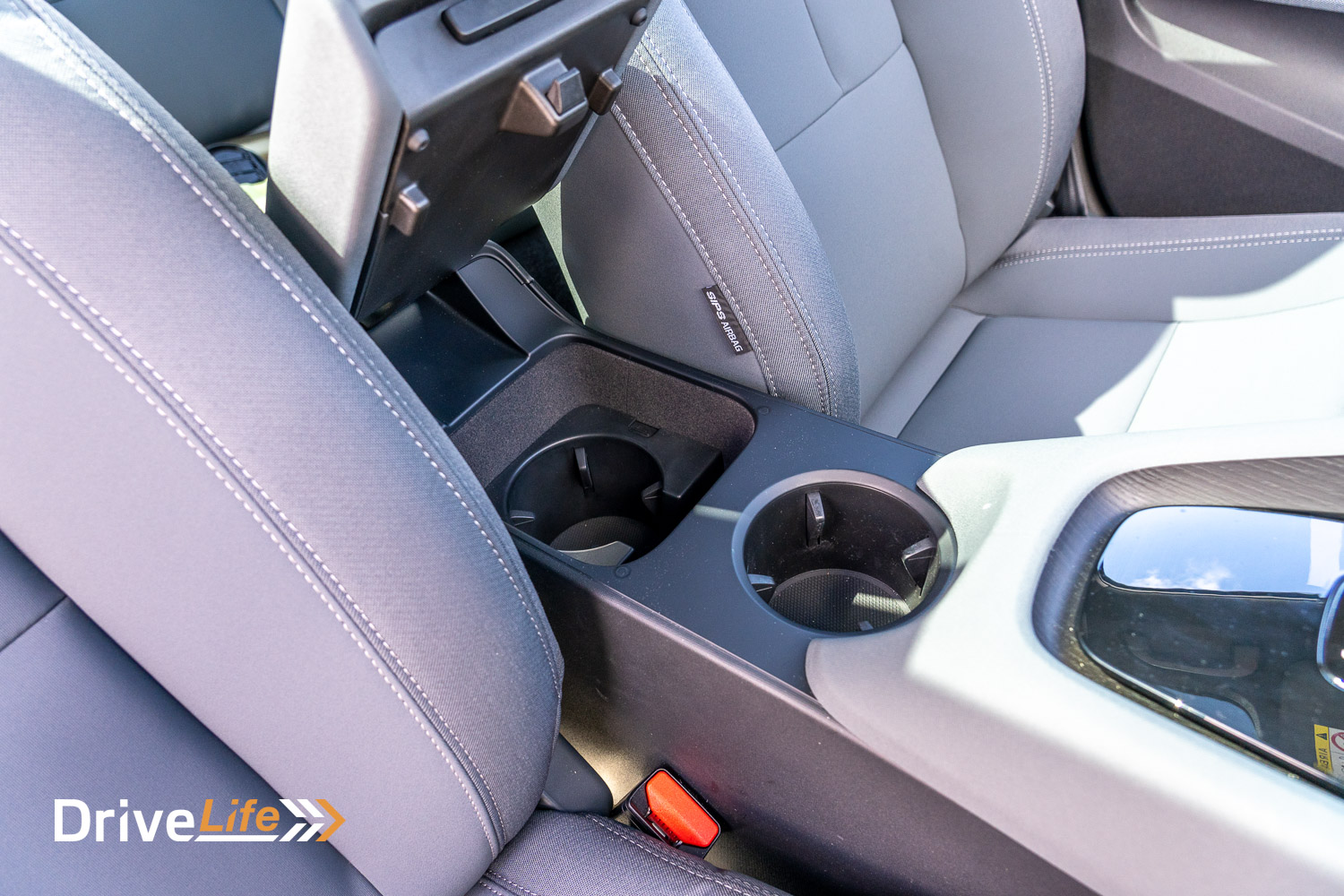
Still on cup holders, for some reason there are no drink bottle holders in the doors, so you’ll need to lay your drink bottle down along the door. I managed to get mine to stand up a few times, but a good couple of bumps will see it fall flat again. Not ideal. A smaller drink bottle will likely fit inside the door standing up, but anything larger will not.
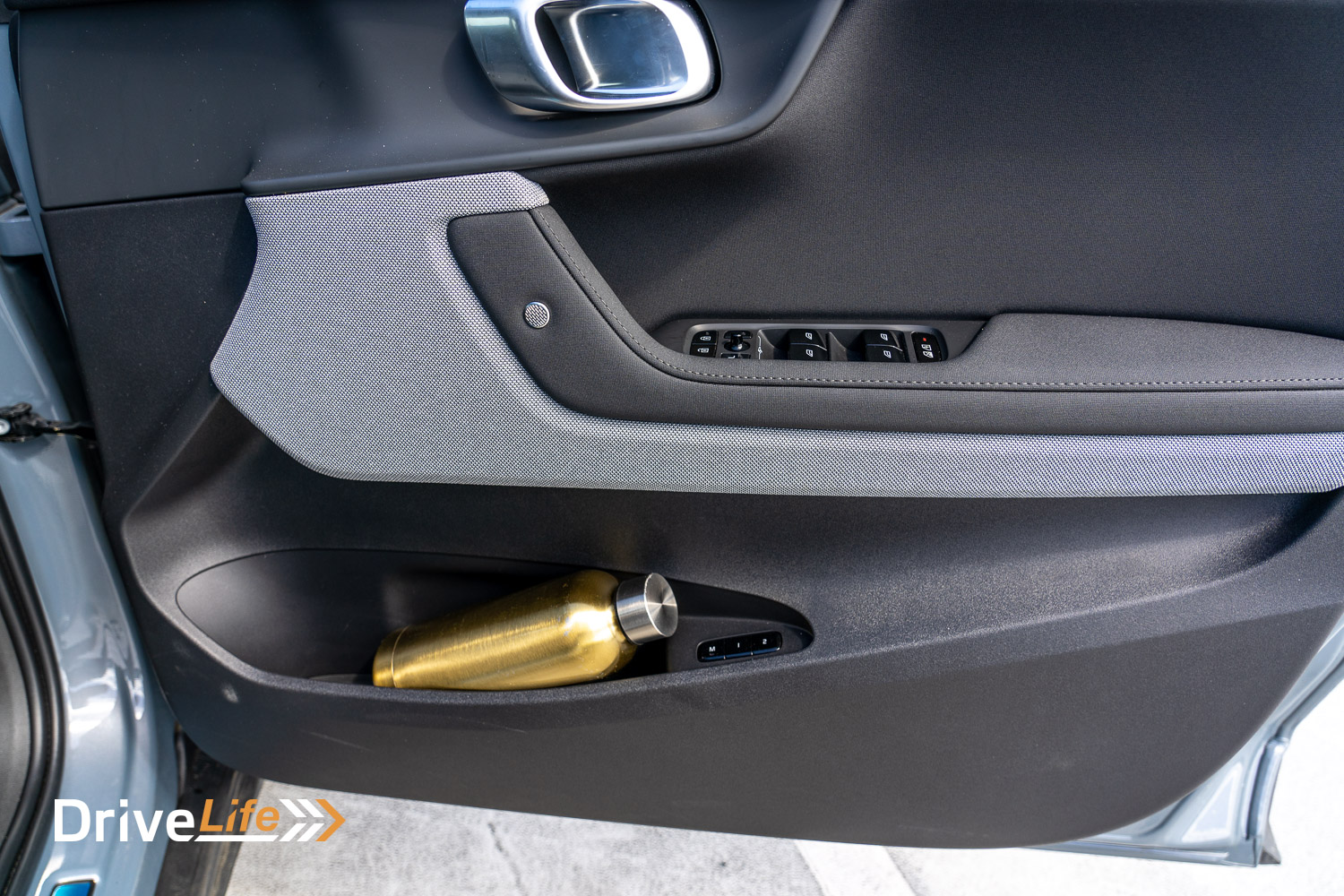
The thing that really grabs your attention is the huge panoramic sunroof that flows from the front to the rear of the car. It doesn’t open but the amount of natural light it lets in is amazing. Yes, yes, the same as the Tesla Model 3, but nice all the same. There’s also a little Polestar logo projected up onto the sunroof at the front of the roof, another small but appreciated touch.
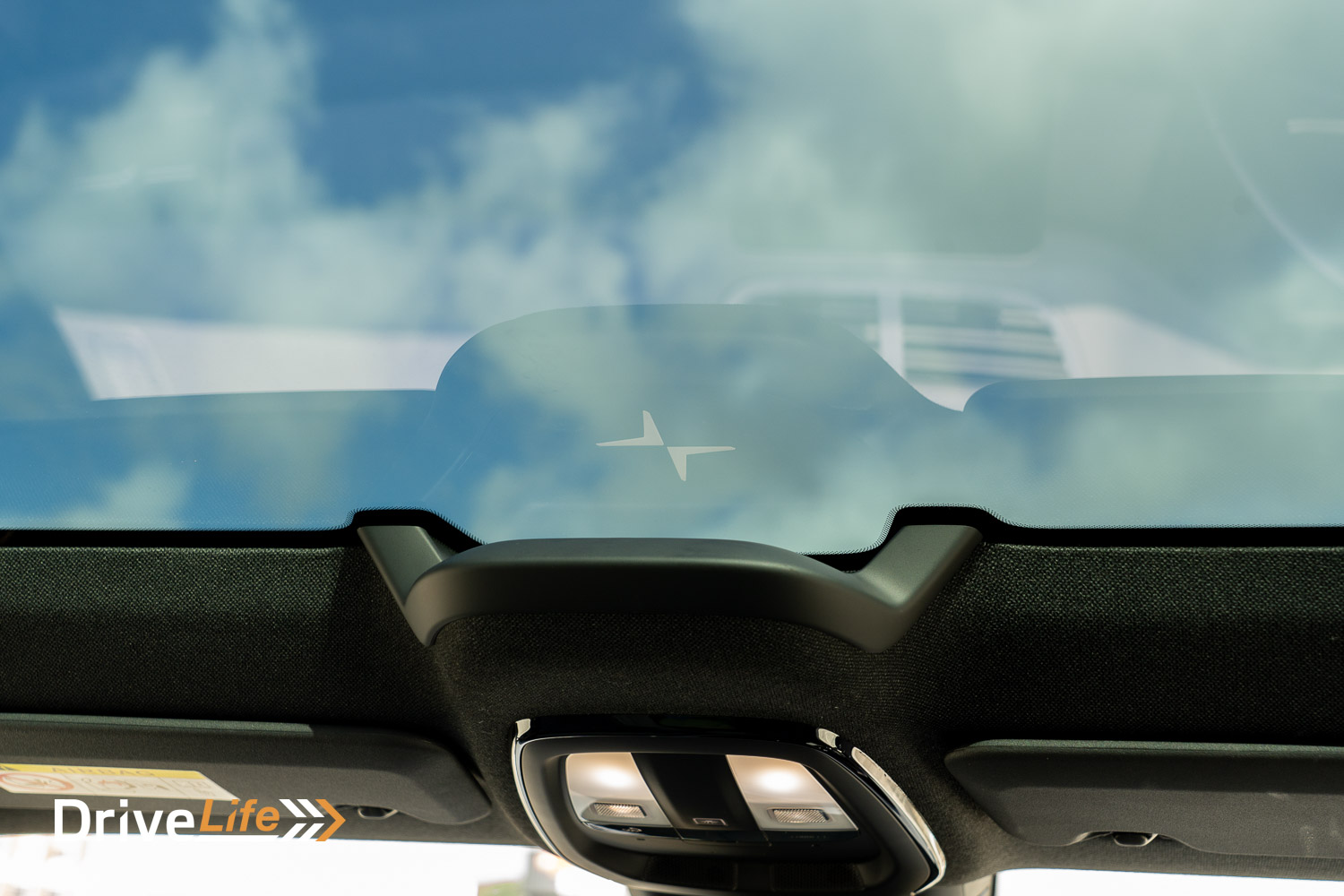
The feeling of space and light is a little undermined by a lack of headroom. It’s acceptable in the front seats, but rear-seat passengers will have their heads hitting the roof if they are on the taller side. Legroom in the rear is slightly above average; the Tesla Model 3 has a lot more room.
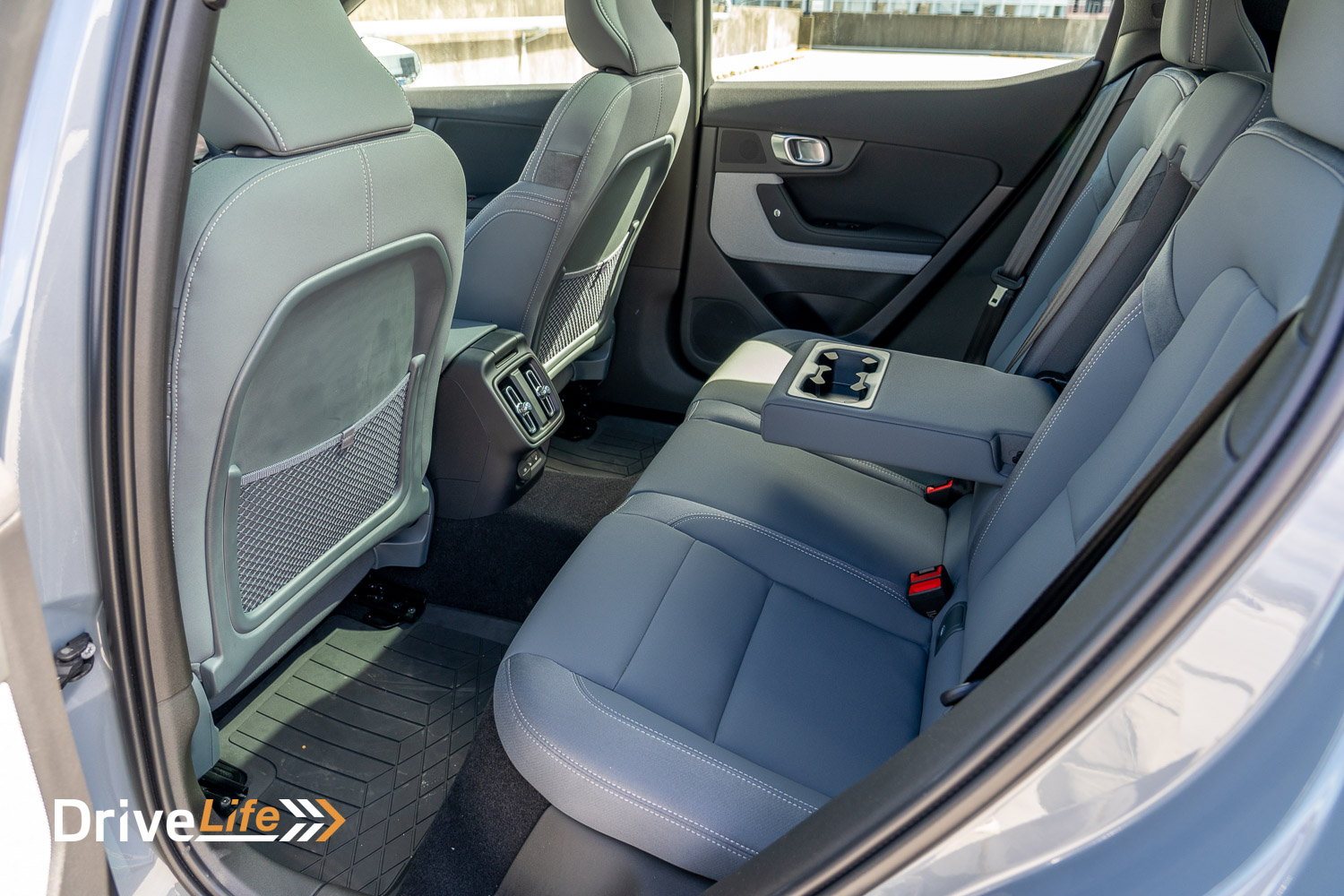
With the Plus Pack of our test car, that meant the rear seat was heated, as well as the front. There are two USB-C ports back there as well, and a ski hole in the middle of the centre seat. A nice feature is that when the seats are folded down, they are almost flat, something that’s become a bit of a rarity.
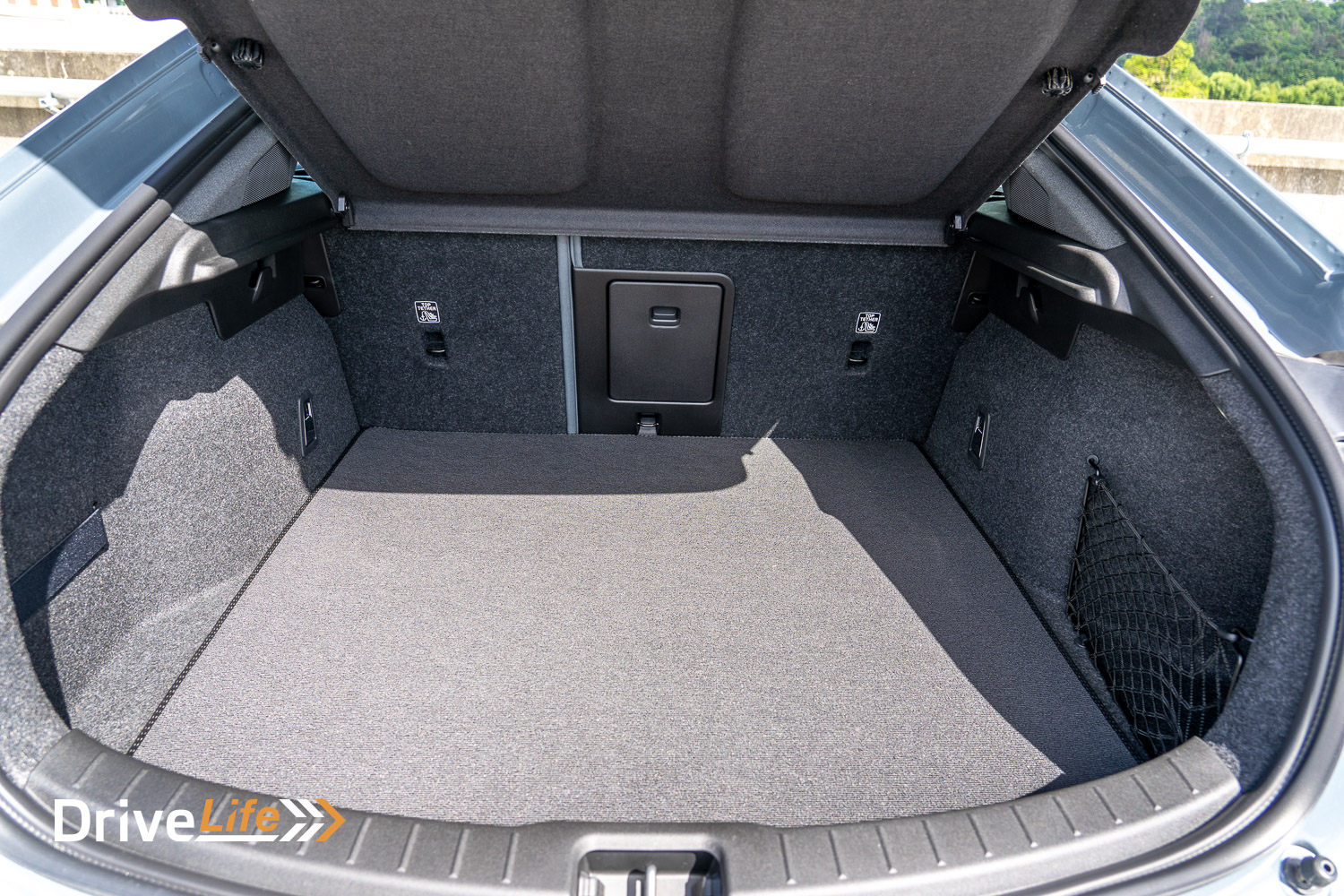
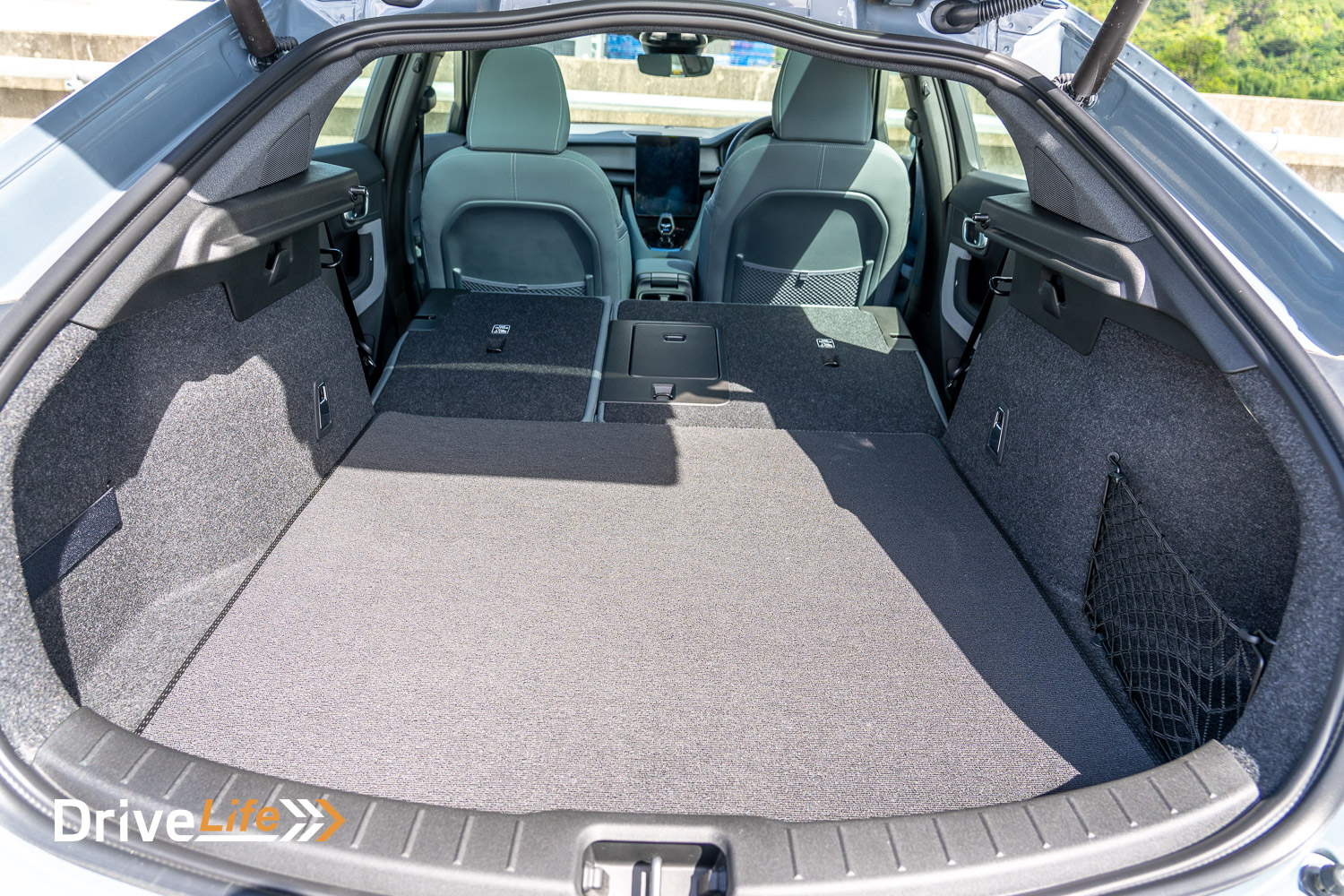
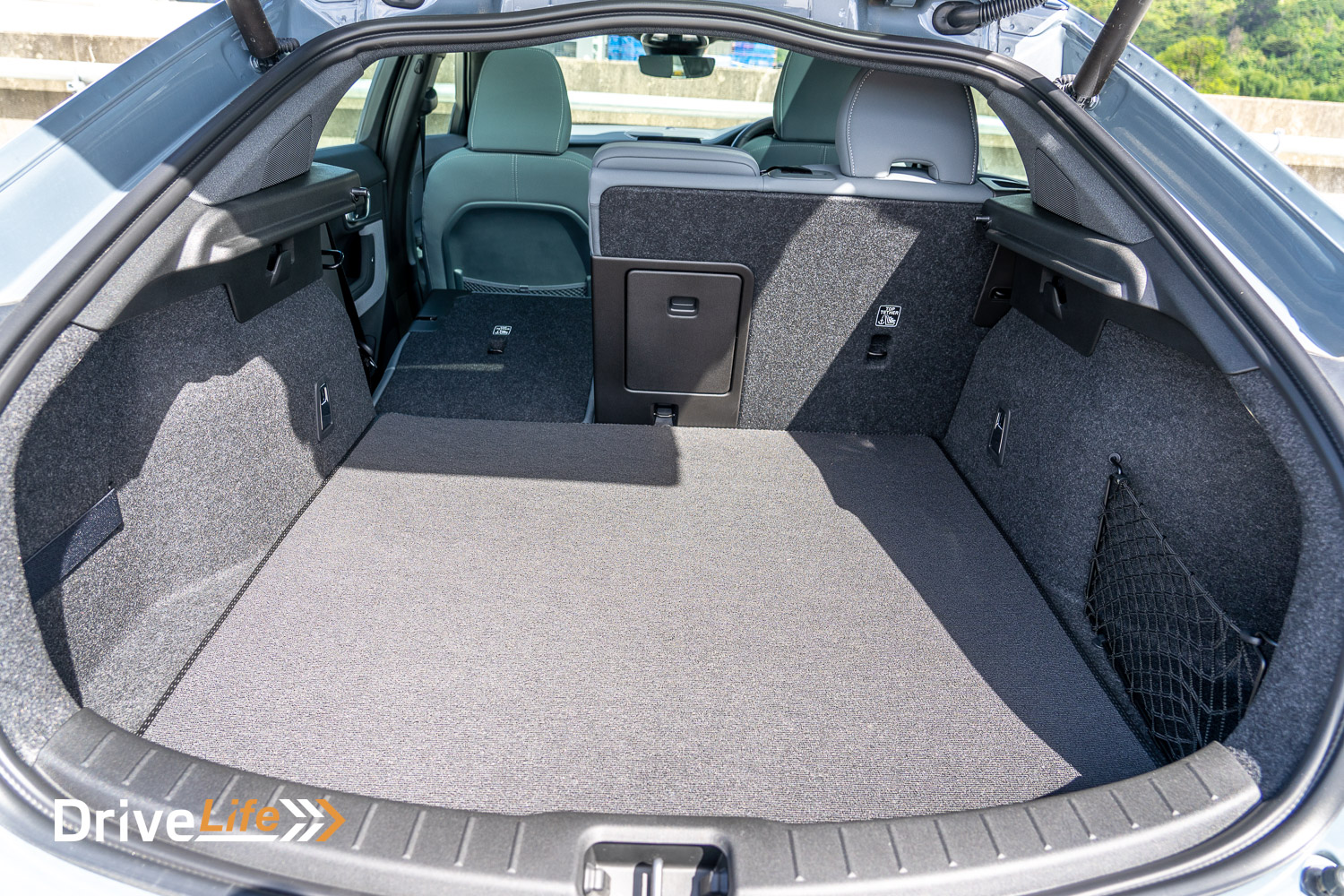
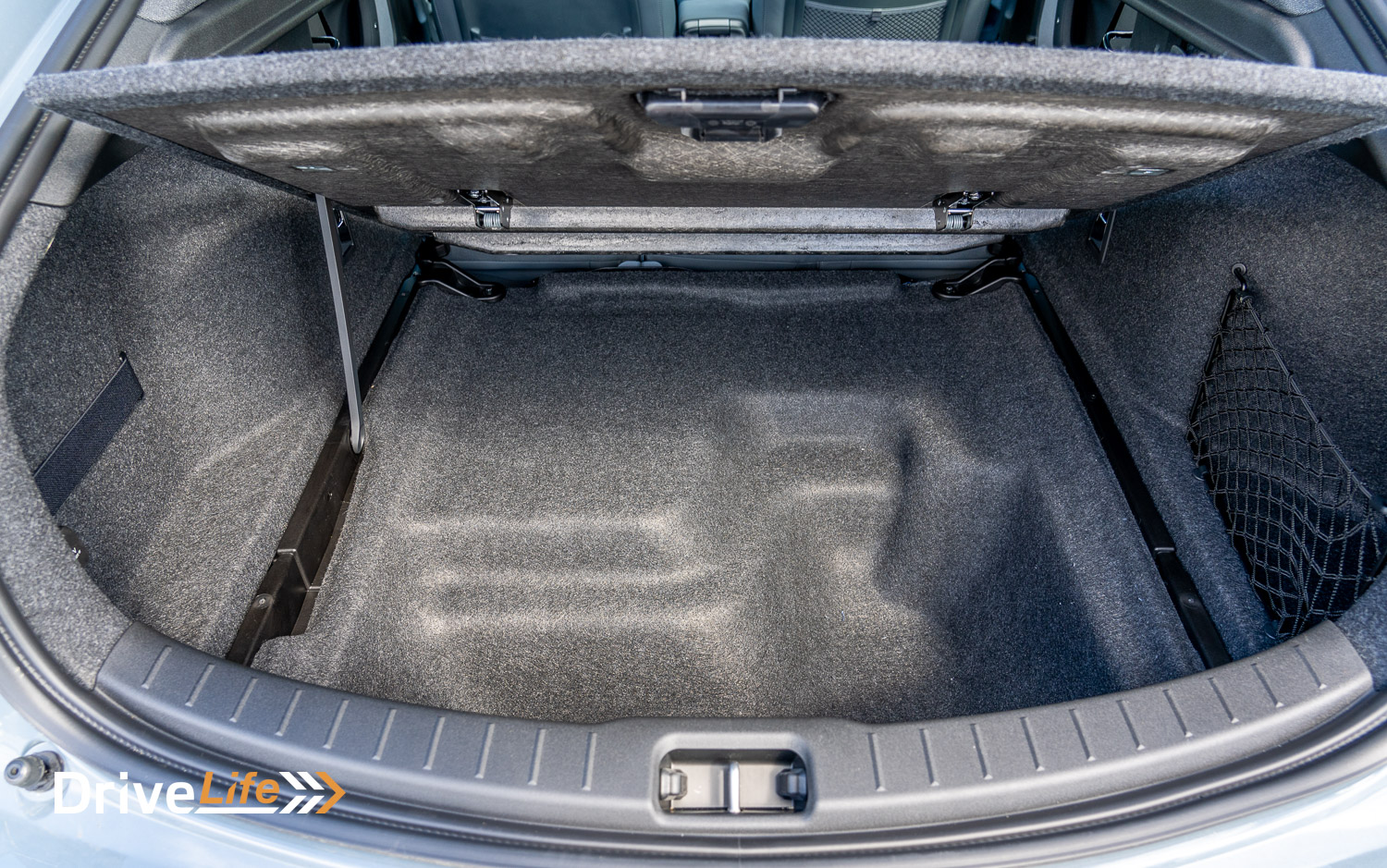
If your rear-seat passengers like windows-down driving, they’ll notice they only go down just over halfway. Not the end of the world, but it matters to some buyers.
In the boot, you get a very good 405 litres of space, with another area under the floor for more things like your 230-volt home charger. The tailgate is electric on all models and can be opened or closed from the remote, dashboard, or by waving your foot under the car. Under the boot mat is a flip-up divider to help stop your things from floating around the boot while on the move. On picking up the car, I was told, “there’s 300kW of power, you’re gonna need this.” He was probably right.
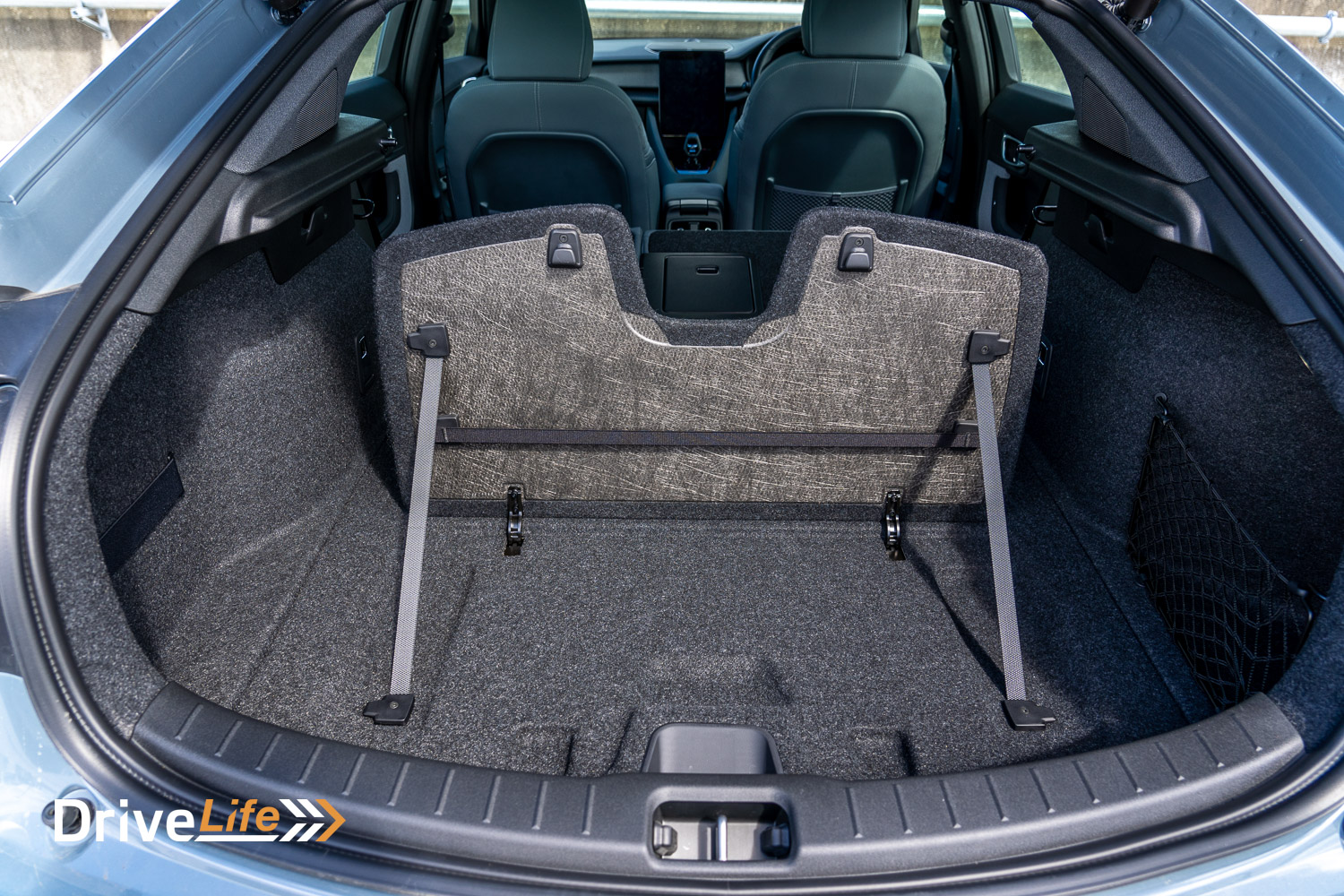
The front trunk is 35 litres in size; not huge, but still usable. The frunk also includes a tyre repair kit, as the car does not come with a spare.
I’m a bit torn on the interior of the Polestar 2; it looks inviting and modern, but I was expecting more at $104,900.
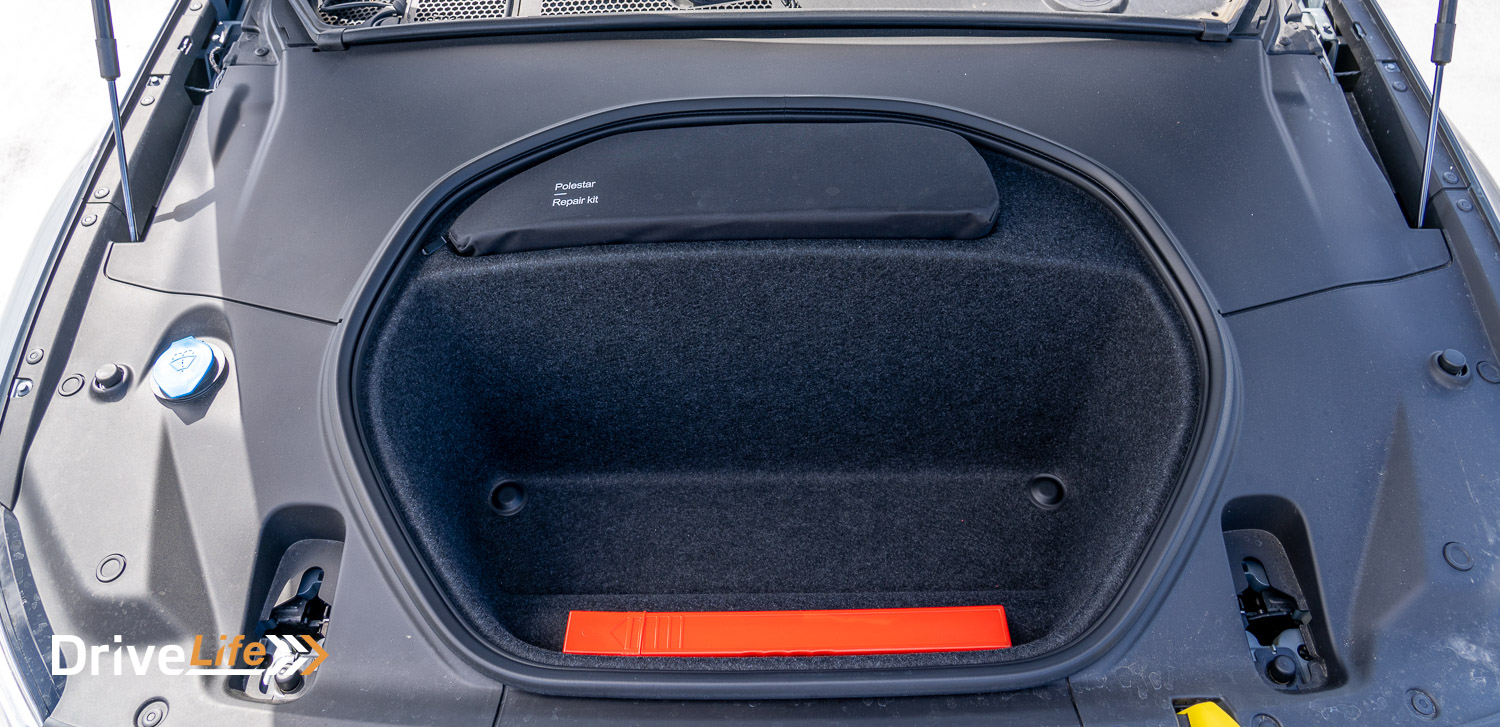
What’s The 2022 Polestar 2 Long Range Dual Motor Like To Drive?
Of course, it’s summer in Wellington, so that meant it was raining when I picked our test car up. First impressions? There is no rear window wiper. I’m desperately hoping this doesn’t catch on, as it means you can’t see much out the back window when wet. Unfortunately, the Kia EV6, the Hyundai Ioniq 5 and the Tesla Model Y are all missing a rear window wiper, so it looks like this is the way of the future.
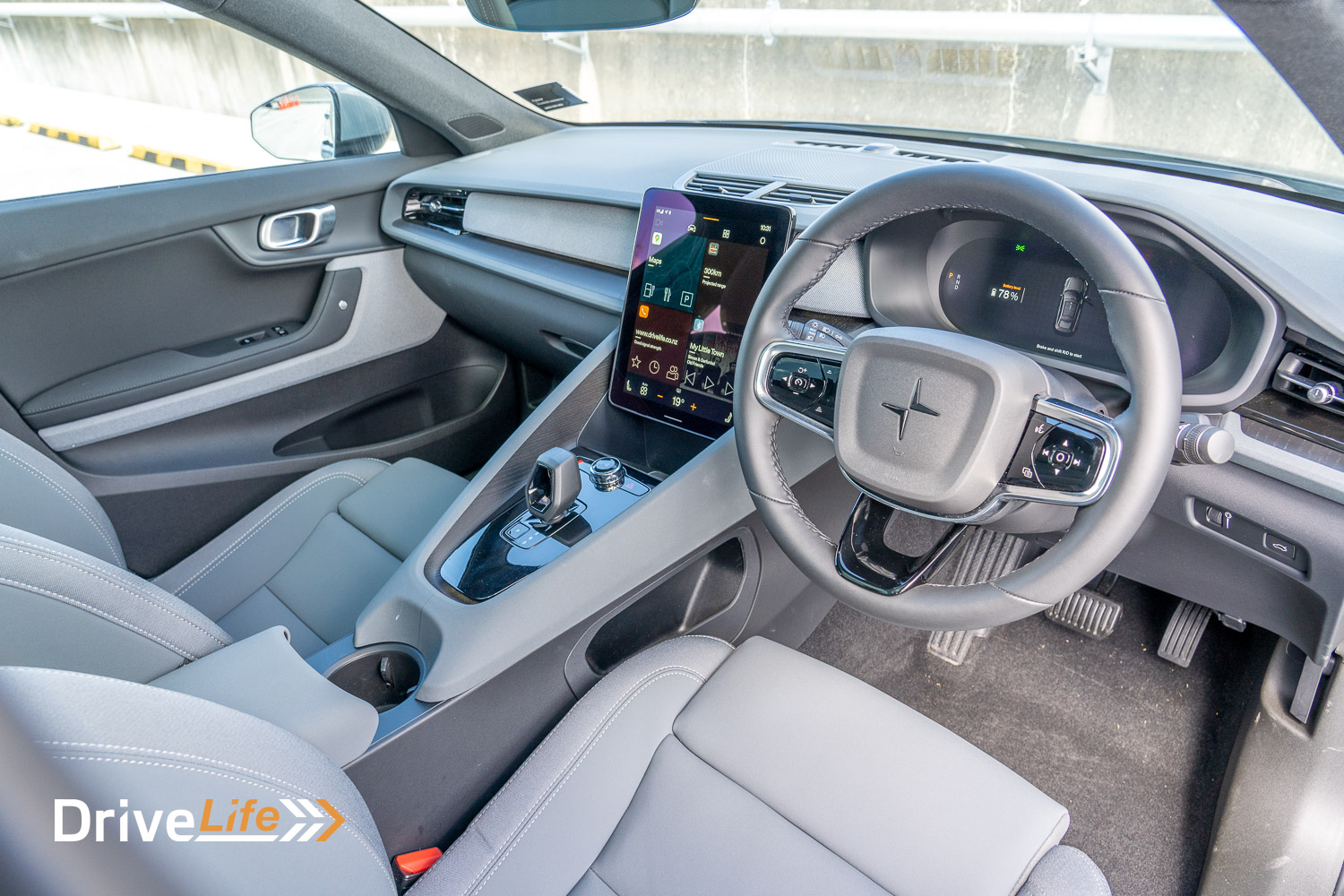
The Polestar 2 and I hit the road home to Wellington. With the wet road and an unfamiliar car, I was taking it easy knowing there is 300kW of power available under my right foot. Even with all-wheel-drive, I was expecting this car to be a bit of a handful with that 405hp on tap.
Seat comfort – even on the initial first impression – feels spot on, and in my week with the car, this was a highlight. While there’s only manual seat cushion adjustment, you can get the seat position spot on, and the general driving position in relation to seat/steering wheel/pedals is perfect too. You can tell Polestar has really taken note of this aspect of driving.
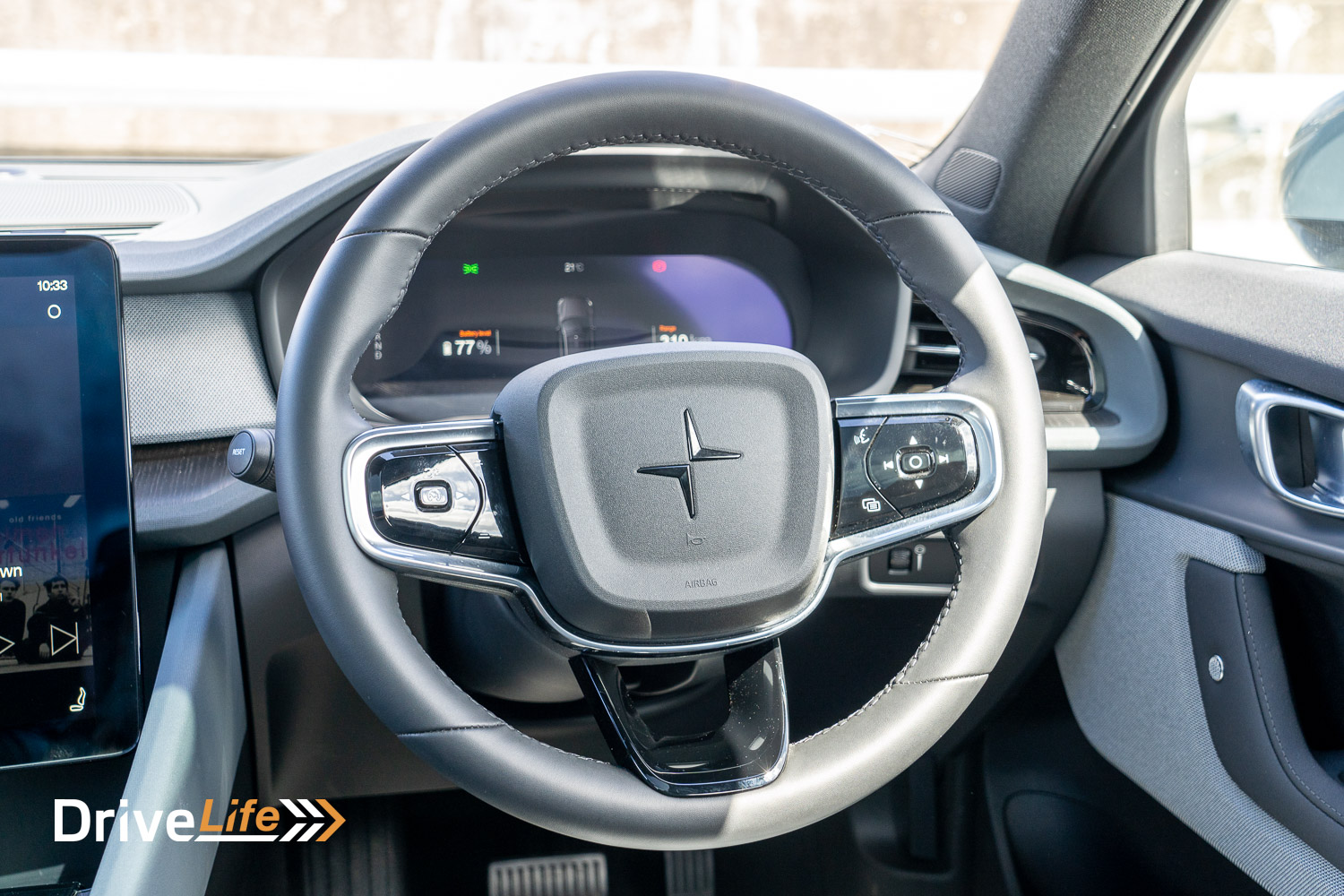
I got a run-through of the controls before taking delivery of the car, and this included the brake regeneration (regen) settings. There are 3 settings, and no paddles to adjust regen from the steering wheel. The three settings are Off, Medium (50%) and Standard. Standard means almost one-pedal driving, and although I tried out Off and let the car coast at times, I ended up leaving brake regen in Standard mode for the rest of the time. It’s not truly one-pedal driving, but close to it, and makes Daily Driving the Polestar 2 very easy.
The ease of Daily Driving is helped by the fact that there’s no start/stop button. You just get in and put the car in gear – as soon as someone is in the driver’s seat with the key in their pocket, the car is ready to go. Likewise when you get out of the car, simply locking it will turn the car off. It’s all so simple and intuitive.
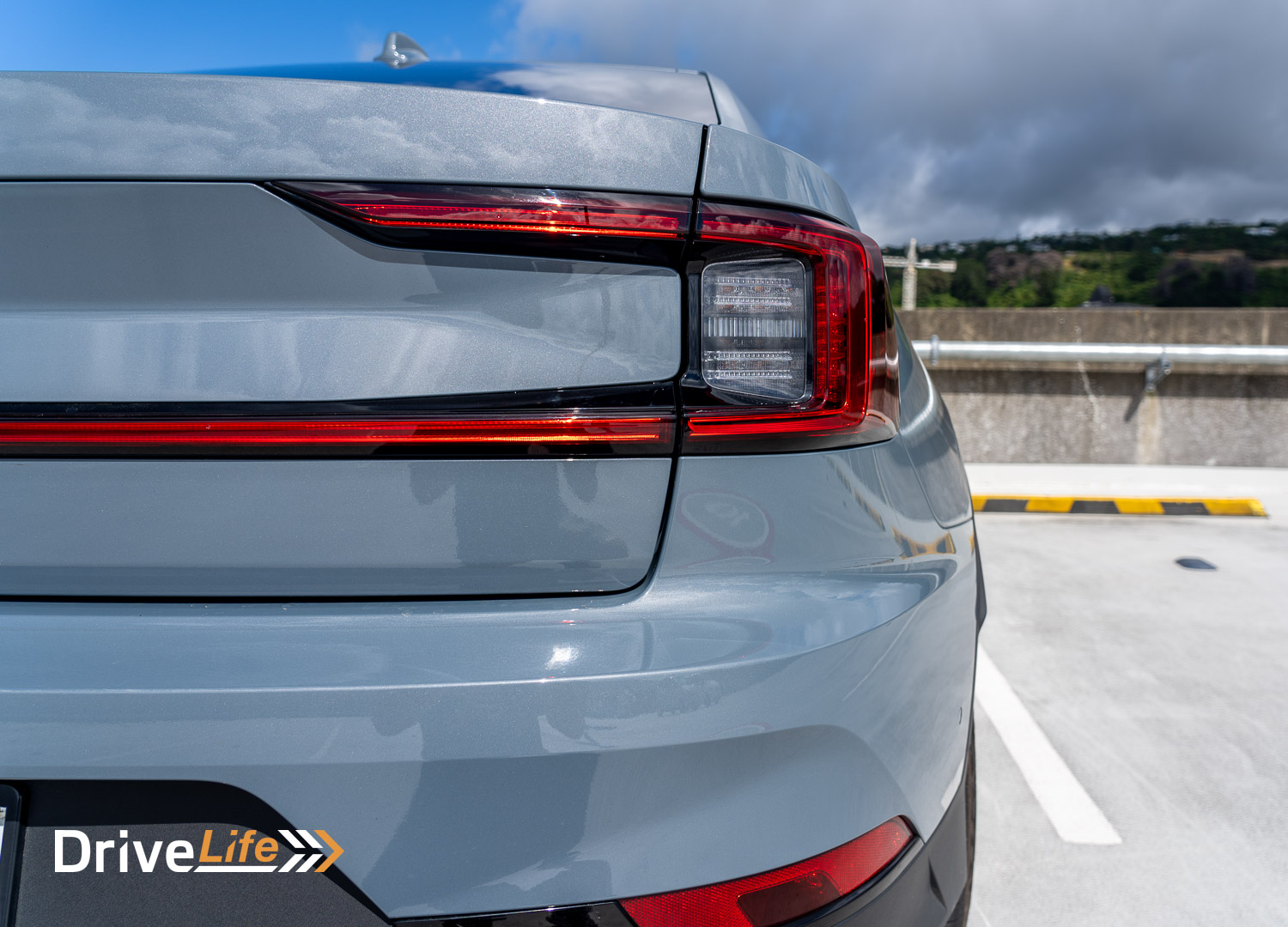
While that part of the drive is simple, oh how I wished that Polestar had given the car the ability for walk-away locking. It’s not a big deal to push the button on the door to lock it, but walk-away locking would add to the simple-to-drive experience.
Naturally, you can also use the key to lock or unlock the car, or open the electric tailgate. For some reason, Polestar has given the 2 a boring and almost-ugly car key. It doesn’t look well made and is not in keeping with the rest of the car. Very strange. Like the lack of walk-away locking, it’s one of those small things that can make a difference.
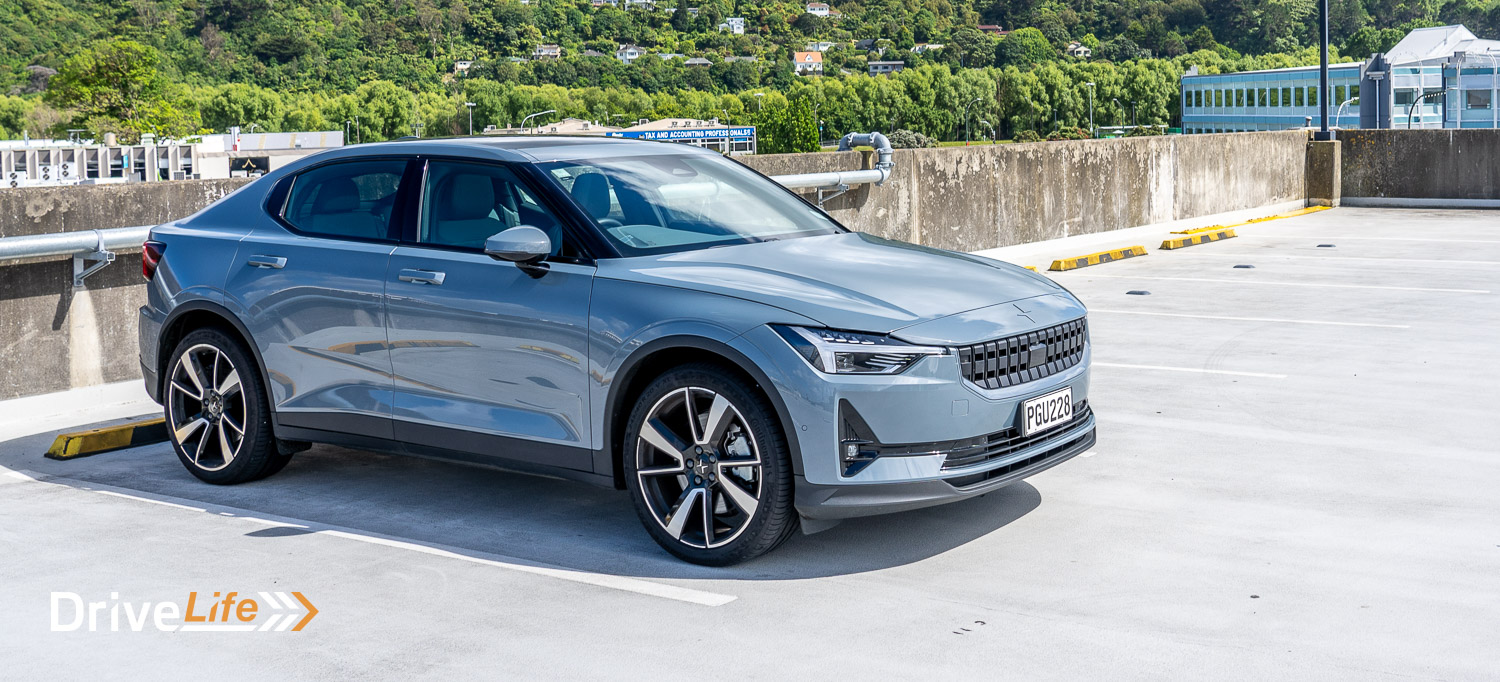
So, “starting” the car is a matter of putting it in gear. It’s the old story; foot on brake and move the gear lever. Thankfully, Polestar has not used buttons for selecting a gear and their lever works beautifully. There are no buttons for lock-out, no dog-leg. Just pull it back for Drive and push it forward for Reverse. While the car key doesn’t feel like quality, the gear lever does. It’s an example of a simple design feature that blows other cars away. You can also rest your hand on the top of the level while driving as a hand rest, to enable better use of the centre screen. It’s a thing of design and practical beauty.
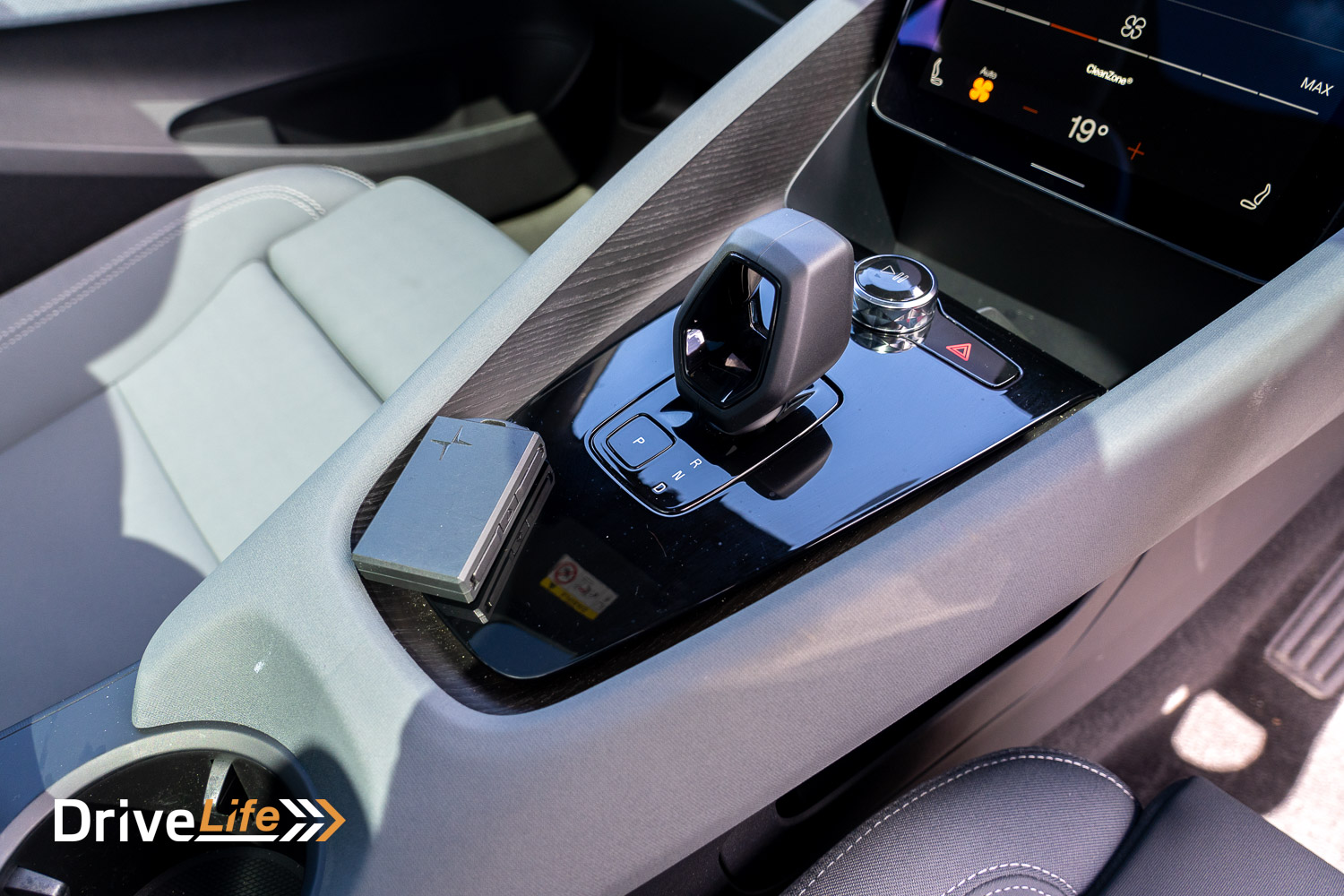
Interestingly, you can also move the gear lever between forward and reverse (or the other way) while the is still moving slowly. This makes it simple to do three-point turns or parallel parking, as you can flip the lever to Drive while still going backwards.
After the initial rainy days with the Polestar 2, the finer weather hit. I’m not talking hot-hot, but around 20 degrees. I found with the AC in Eco mode, the Polestar struggled to cope with 20-degree heat, even with the fan on high. For this reason, I turned off the Eco mode for AC and left it off for the remainder of my time with the car. We also got some hotter days, one where I got back to the car and it was 29 degrees outside. Two things came out of this. I love that so many euro cars allow you to hold down the unlock button on the remote, and all the windows will drop, letting the hot air out before you reach the car (it works for locking/windows up too). But again, even in non-Eco mode, the AC struggled to keep the car cool.
The driver’s vent by the door doesn’t come across to the left enough to give the driver cool air. If you move it too far to the left, the vent shuts off and moving it back slightly means the air isn’t coming in the direction you want it to. The top air vents aren’t great, either. They’re on top of the dash, so it’s difficult to get a decent flow of air from them when the angle is so narrow.
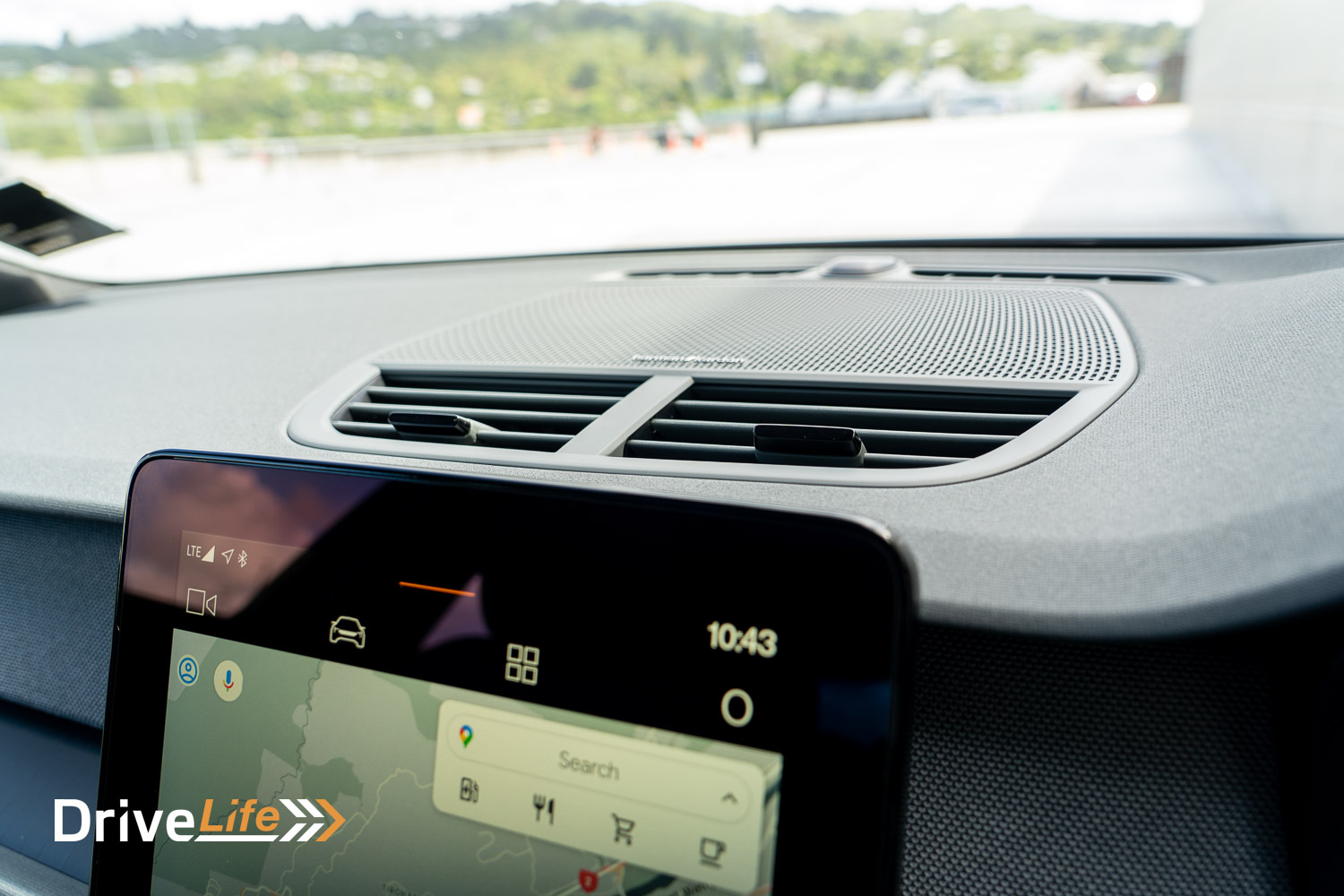
On to more positive things about the Polestar 2. With that 405hp, this car can really move-it move-it. Midrange acceleration is excellent, meaning passing slower traffic is quick and safe. Adding weight with passengers will dampen performance, but there’s always plenty available. It was nice to see that the Polestar 2 has no drive modes, like Sport etc. Just get in and drive. Want to go faster? Put your foot down harder. While the car does the 0-100km/h sprint in 4.7 seconds, it feels so much faster. The dual-motor model like our test car tops out at 209km/h, plenty for New Zealand roads and 80km/h more than you need to lose your licence.
While there are no drive modes, you can adjust steering feedback via the central screen, choosing from 3 settings. The midrange setting felt best for general driving, so I left it there.
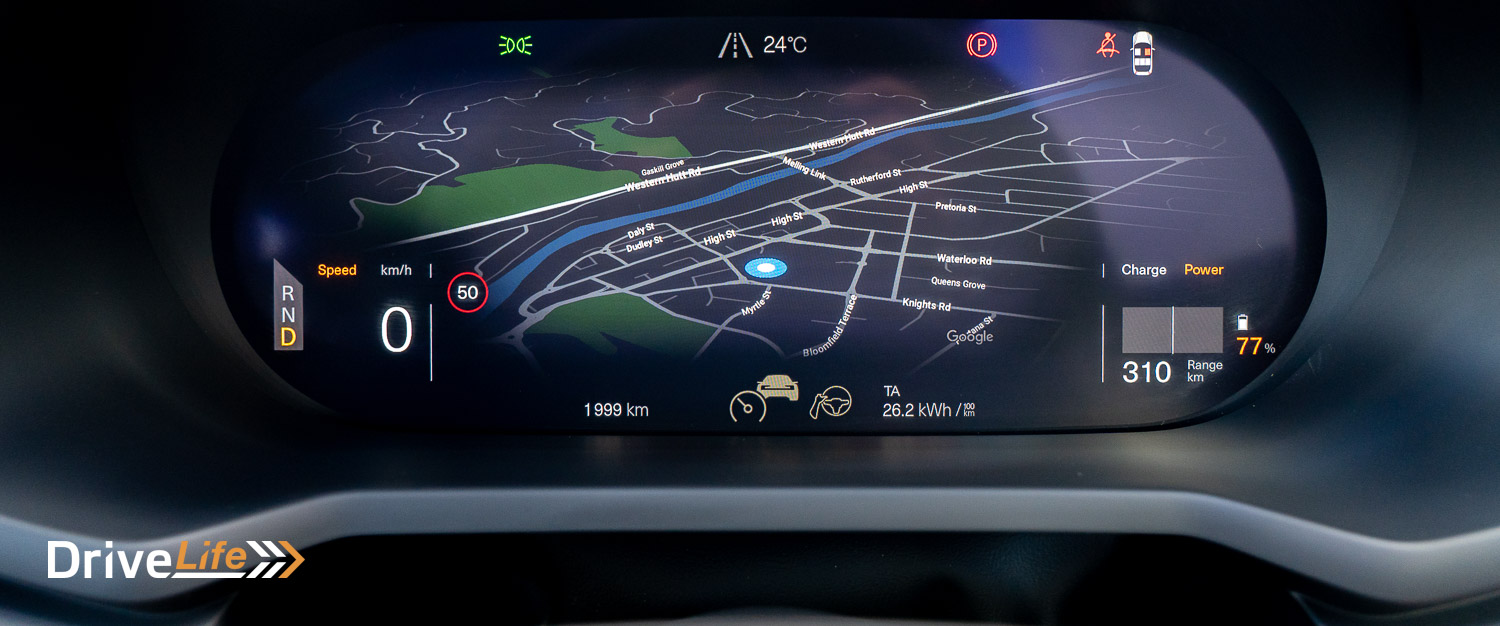
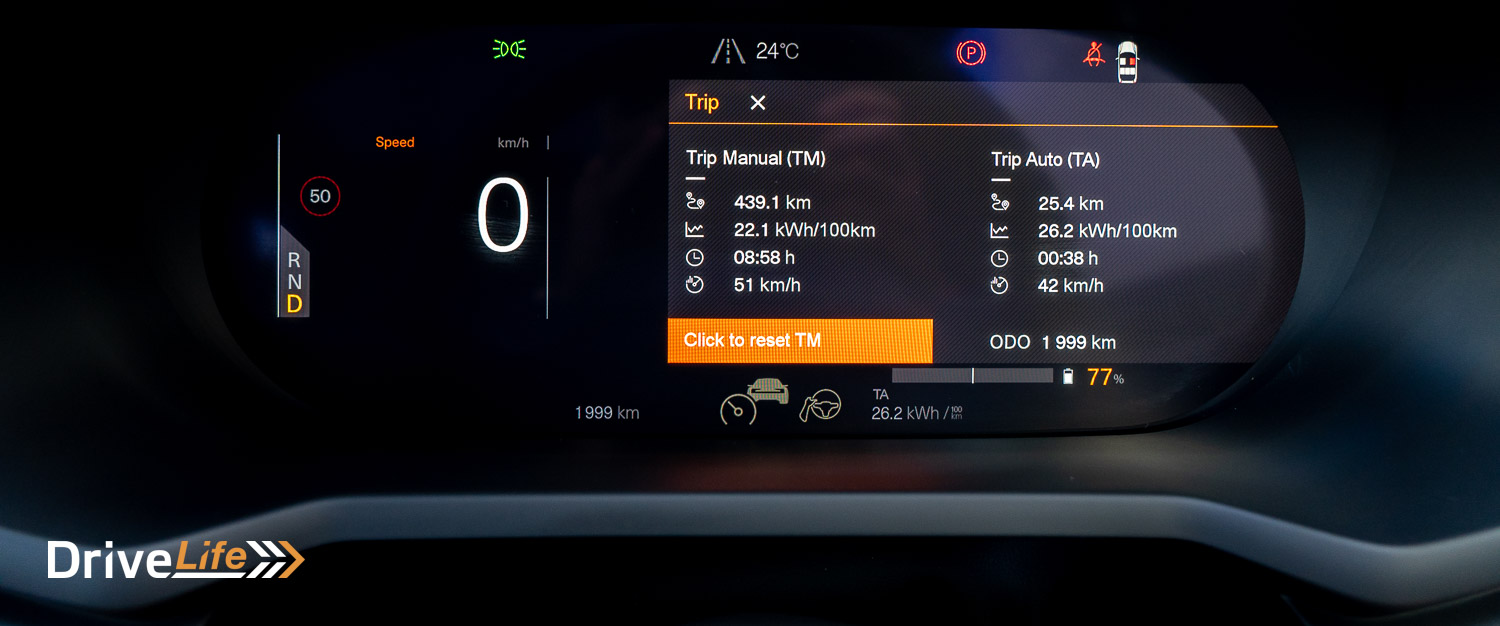
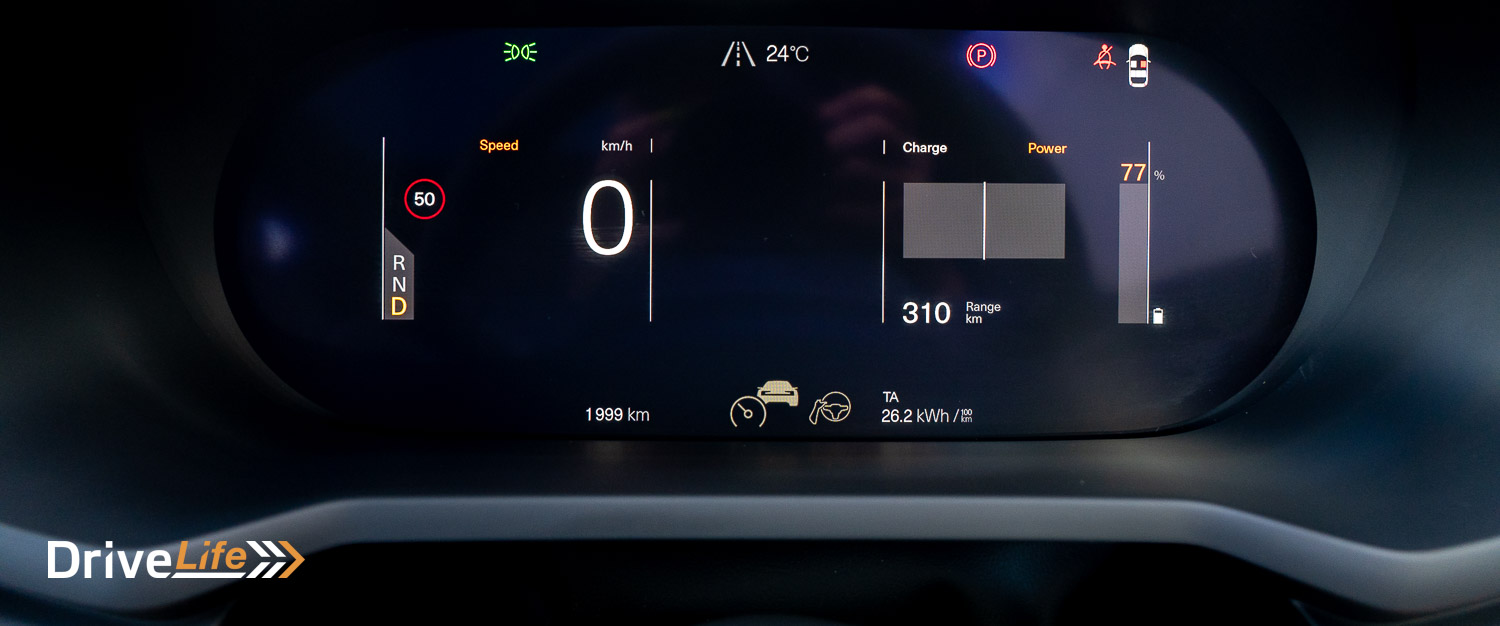
I think the most astounding thing for me for the entire car is the grip in the wet. From a standing start in torrential rain, you can nail the accelerator and the Polestar 2 will launch ahead with zero wheelspin. I mean, ZERO wheelspin. It just grips and goes, with not even a chirp from the Continental Premium Contact 6 245/40/20 tyres. It’s incredible to witness the electronics working so brilliantly well to keep the car safely planted on the road in a straight line. Amazing stuff.
Handling overall is safe and secure with that AWD system, the car is well-damped, but push it too far and the front end will run wide. Does it handle as well as the Tesla Model 3? I’d say on par with it, if not slightly better. The price to pay for nice handling is a firm ride, and the Polestar 2 has one. The Tesla Model 3 and Model Y both ride better. It’s not terrible in the Polestar 2, but short sharp bumps will get some jolts into the cabin. I expect part of this is down to the low profile (40% aspect ratio) tyres. It’s bearable but noticeably firm.
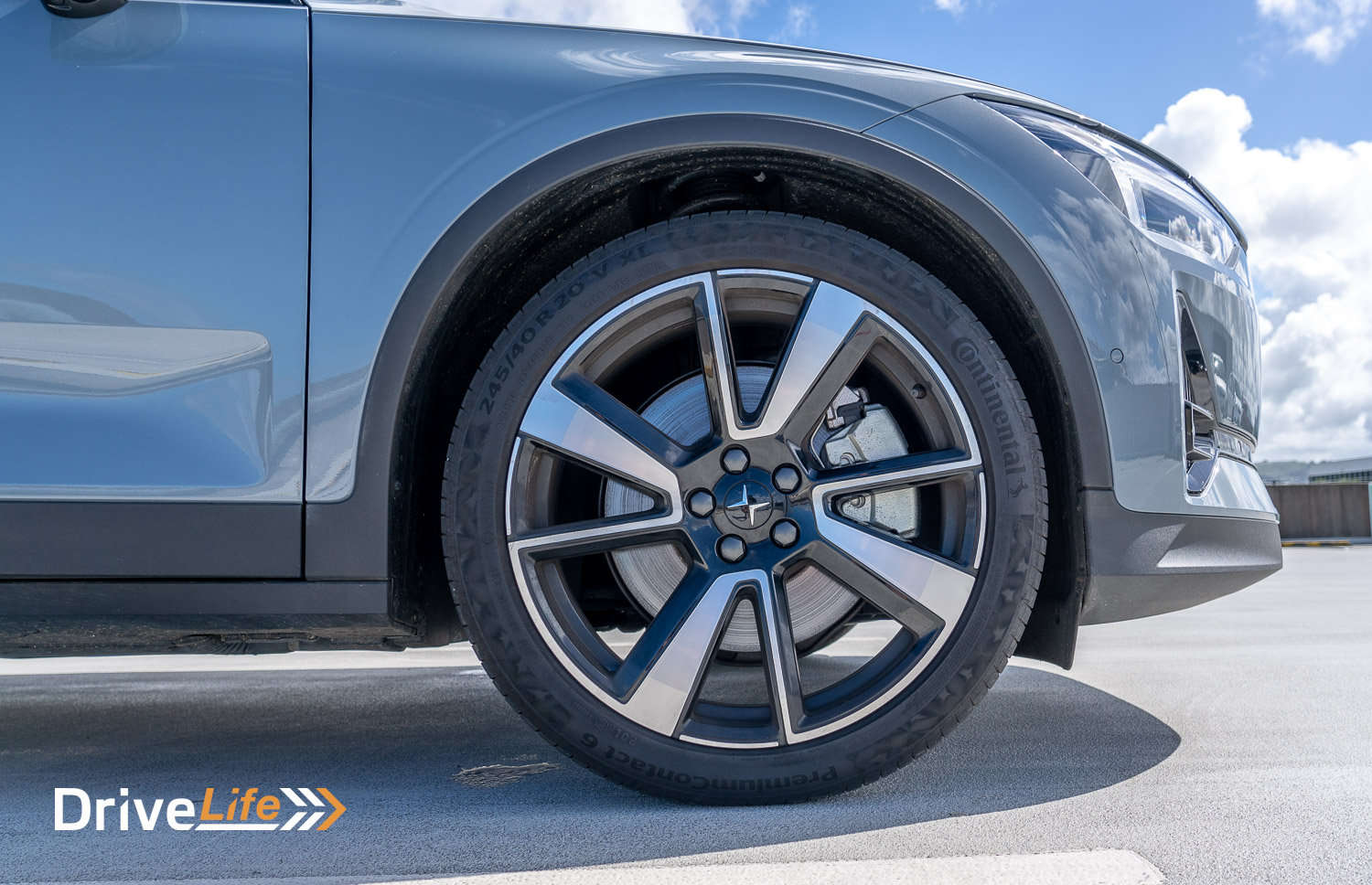
Other great features include the central screen and its user interface (UI). The whole unit is quick to operate and simple to use. It’s Android-based, so you can sign in with your Google account if you want to and add extra apps into the system, like Spotify. As standard, there are not a lot of apps to use, and you certainly don’t get any Fart Mode or Careoke like in a Tesla. Because it’s Google, you can use your voice to control lots of features in the car and do lots of things like setting up SatNav to find an address. A simple “Hey Google” will get the unit responding to your voice, and because Google, it’s quite accurate. In saying that, I did have one day when I wanted to go to Haitaitai Thai restaurant, and it was a struggle, eventually the car tried to get me to navigate to a massage parlour in Sydney (I didn’t go). I expect most SatNav systems would struggle with Haitaitai Thai. It’s hard enough even just to say it.
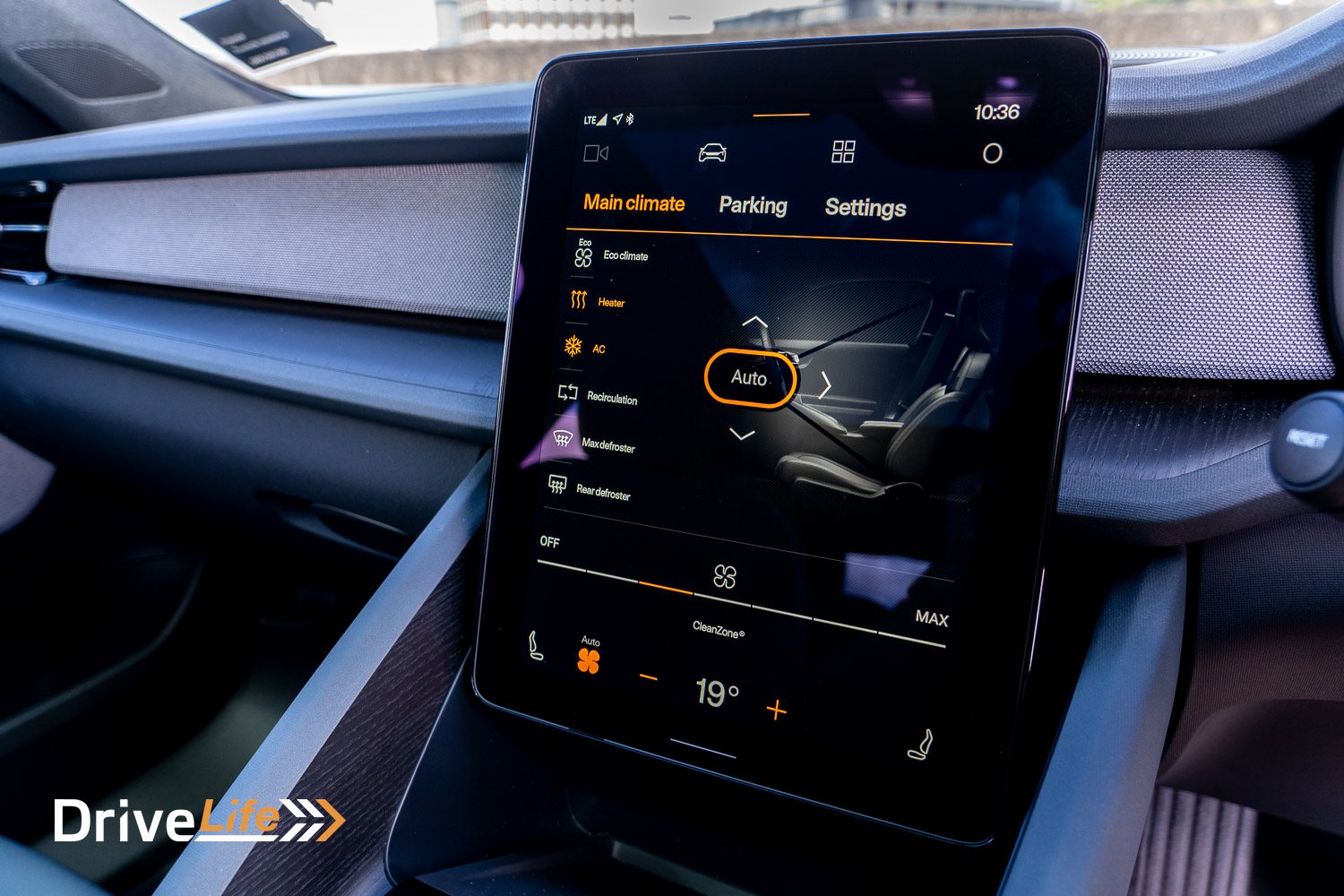
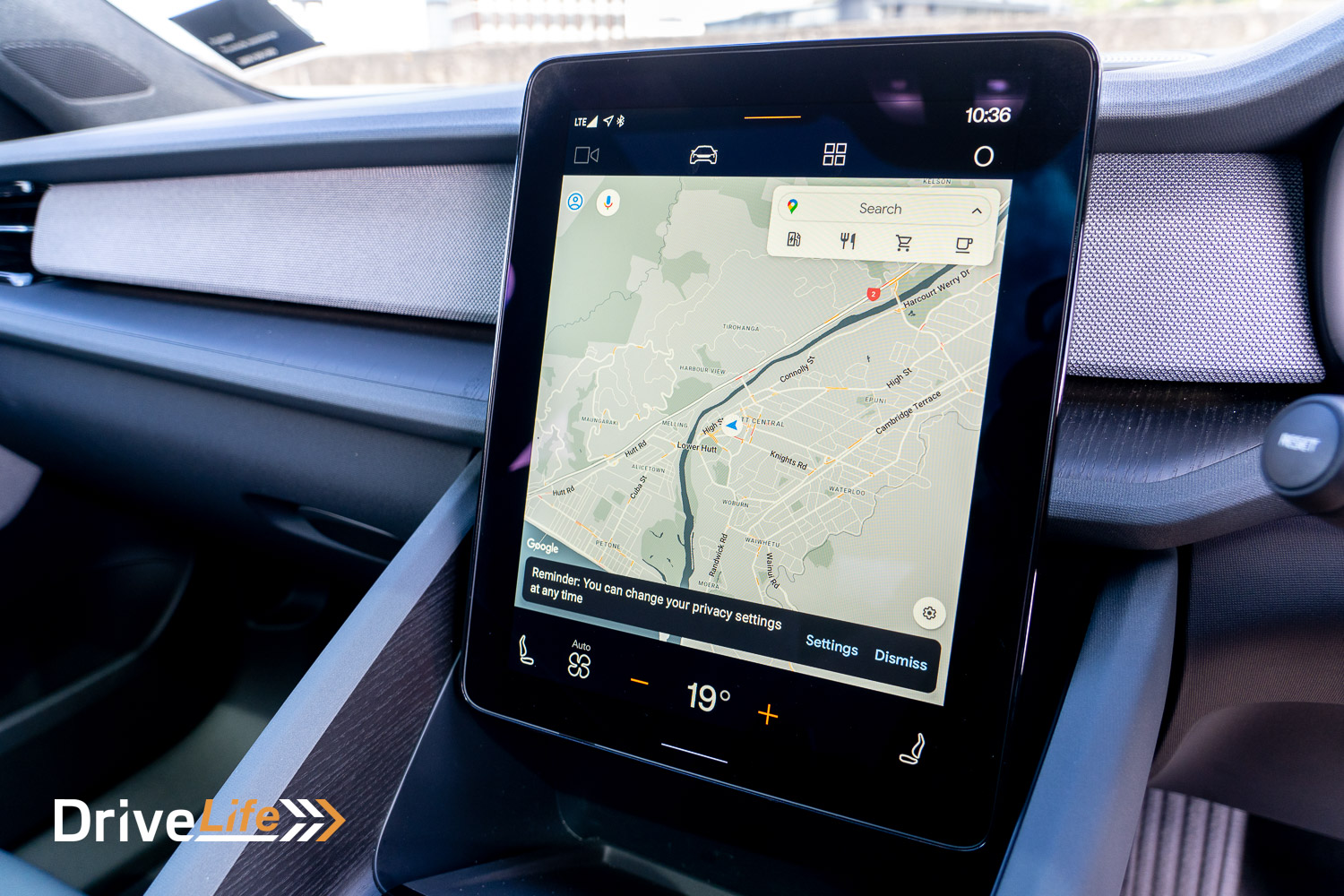
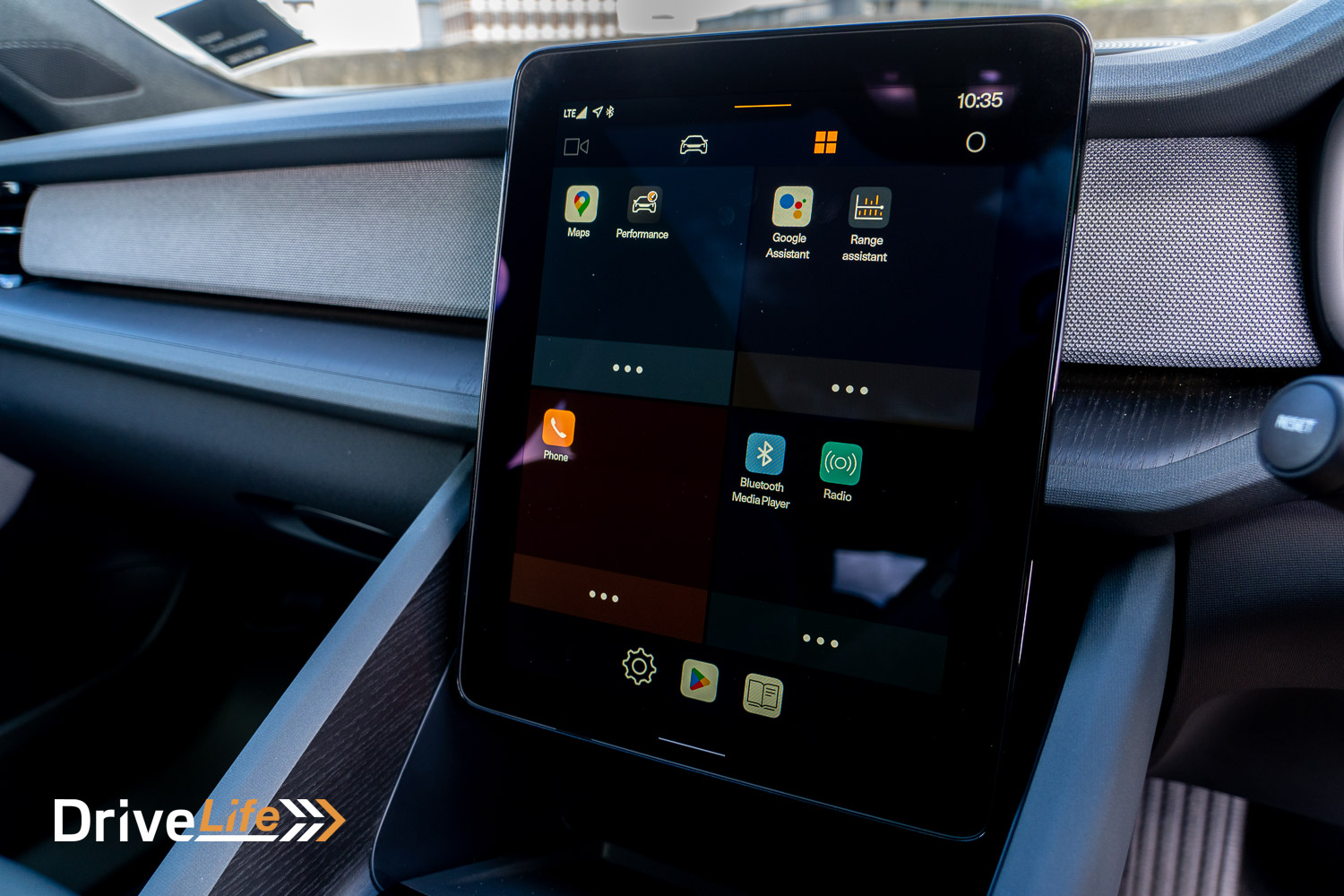
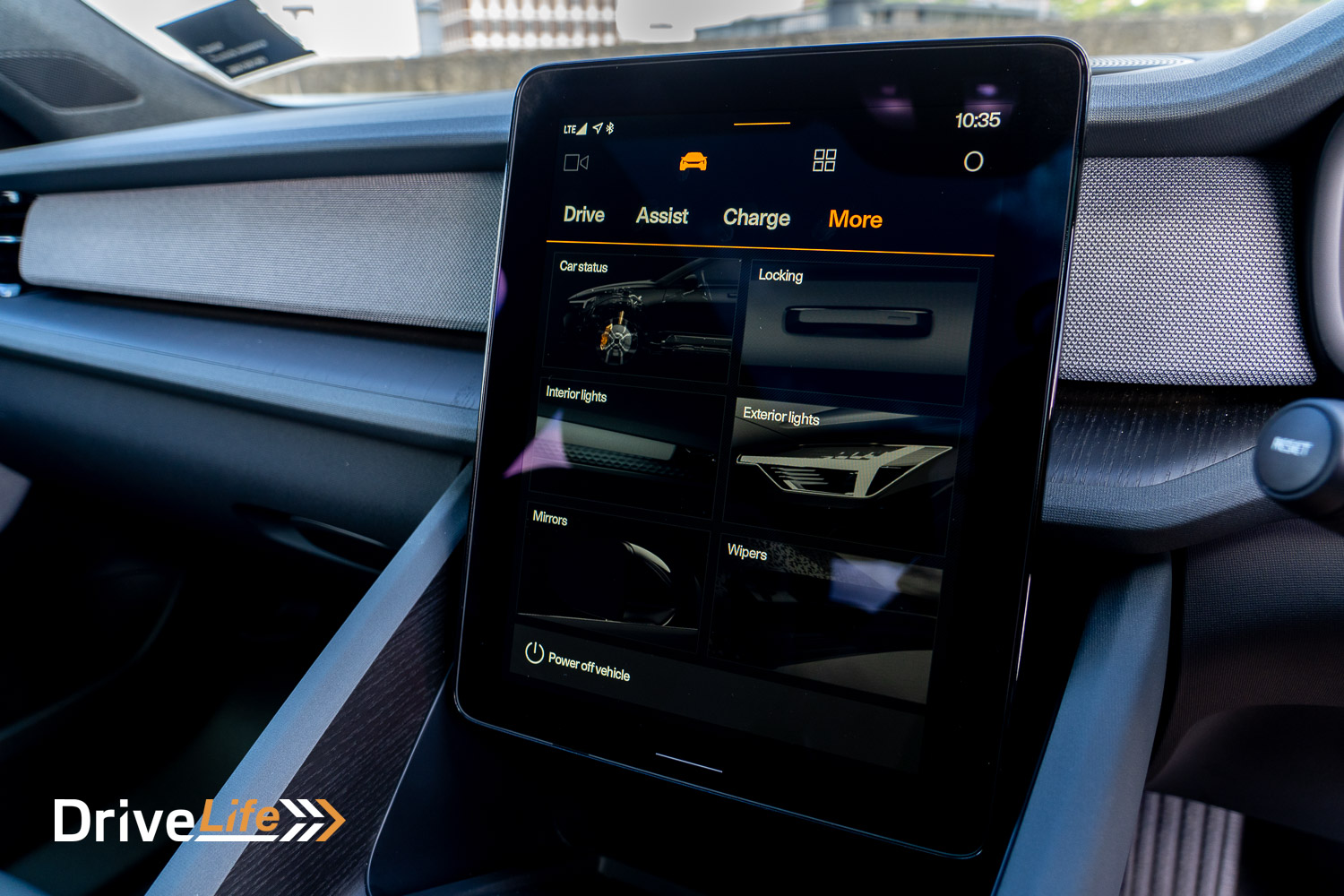
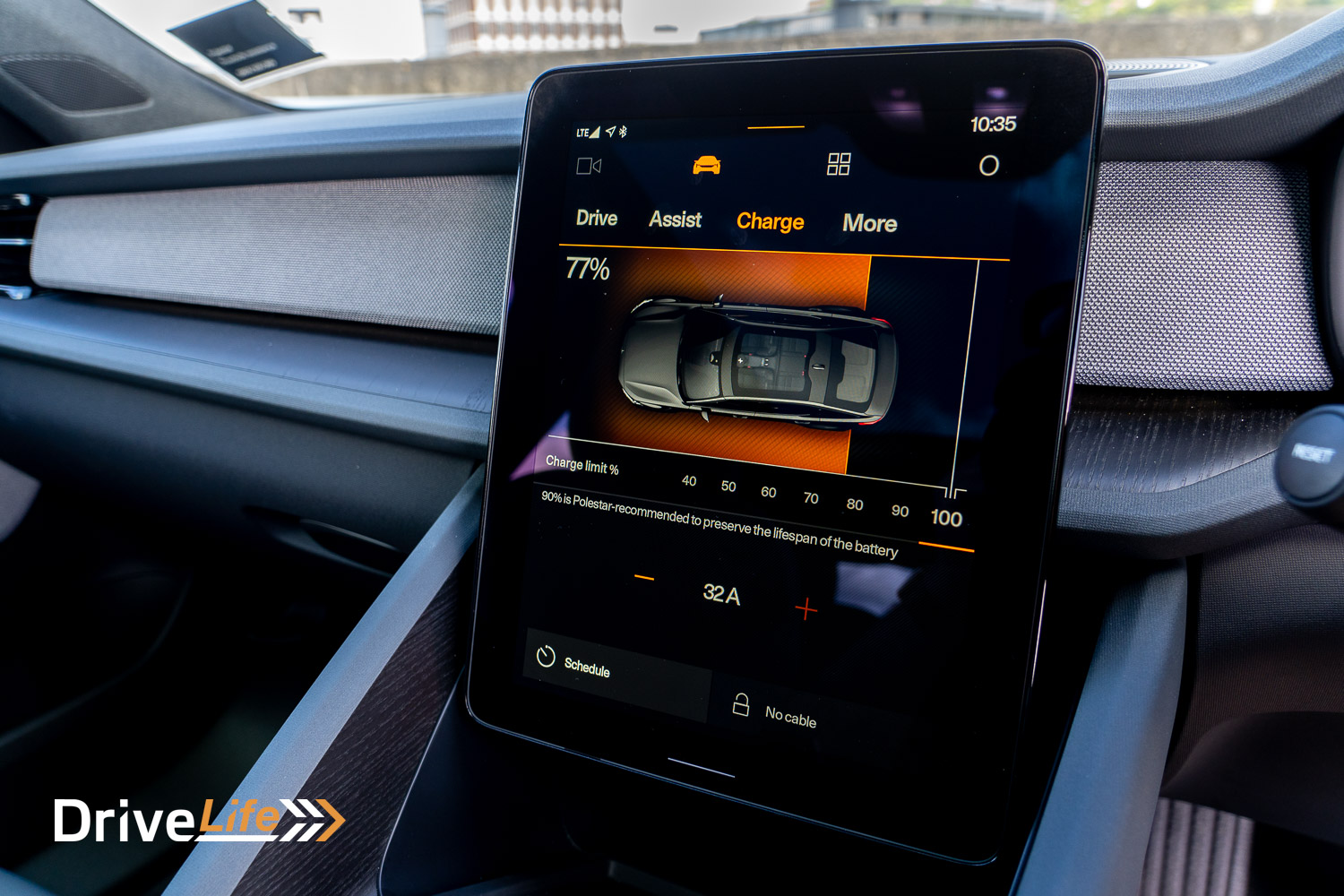
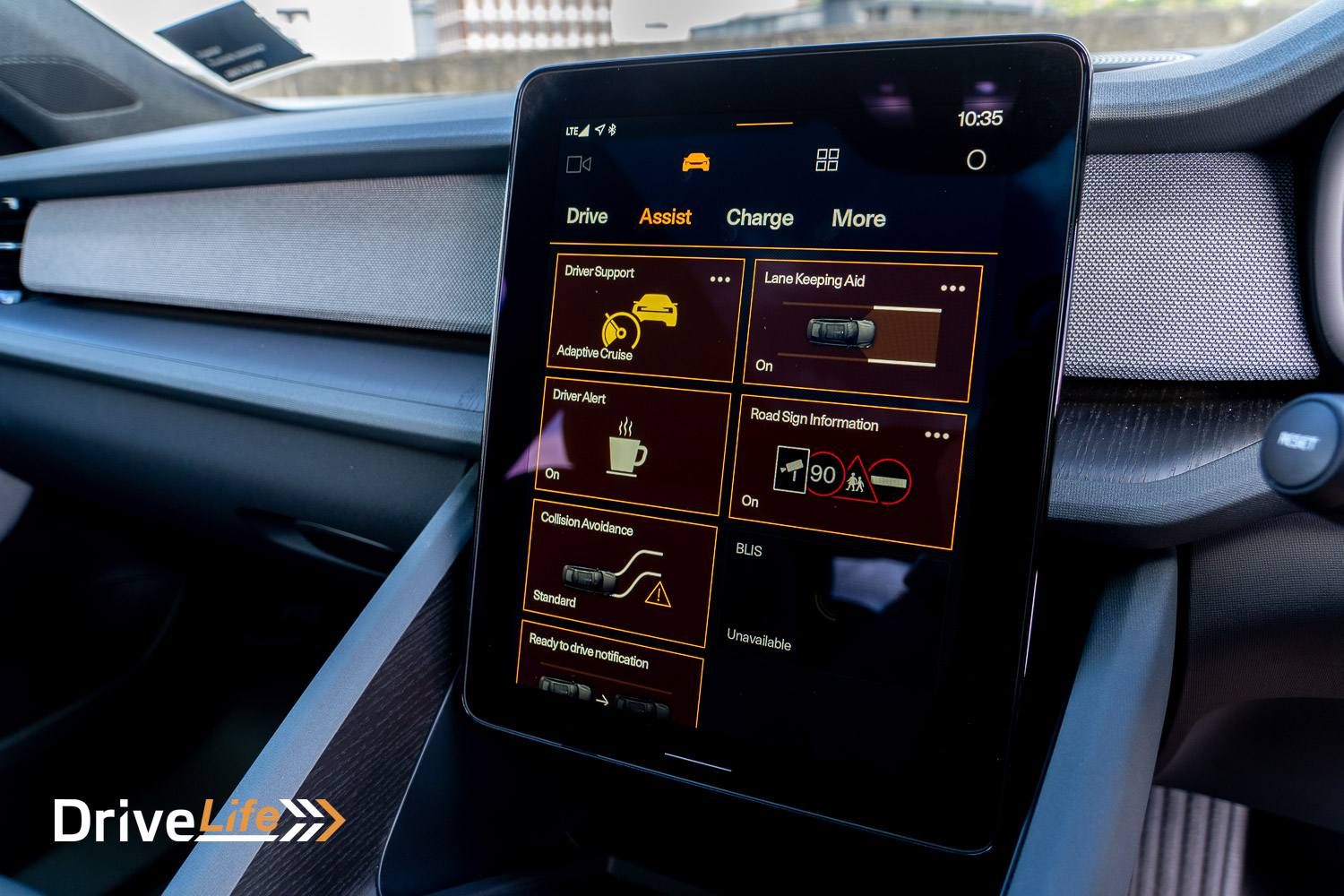
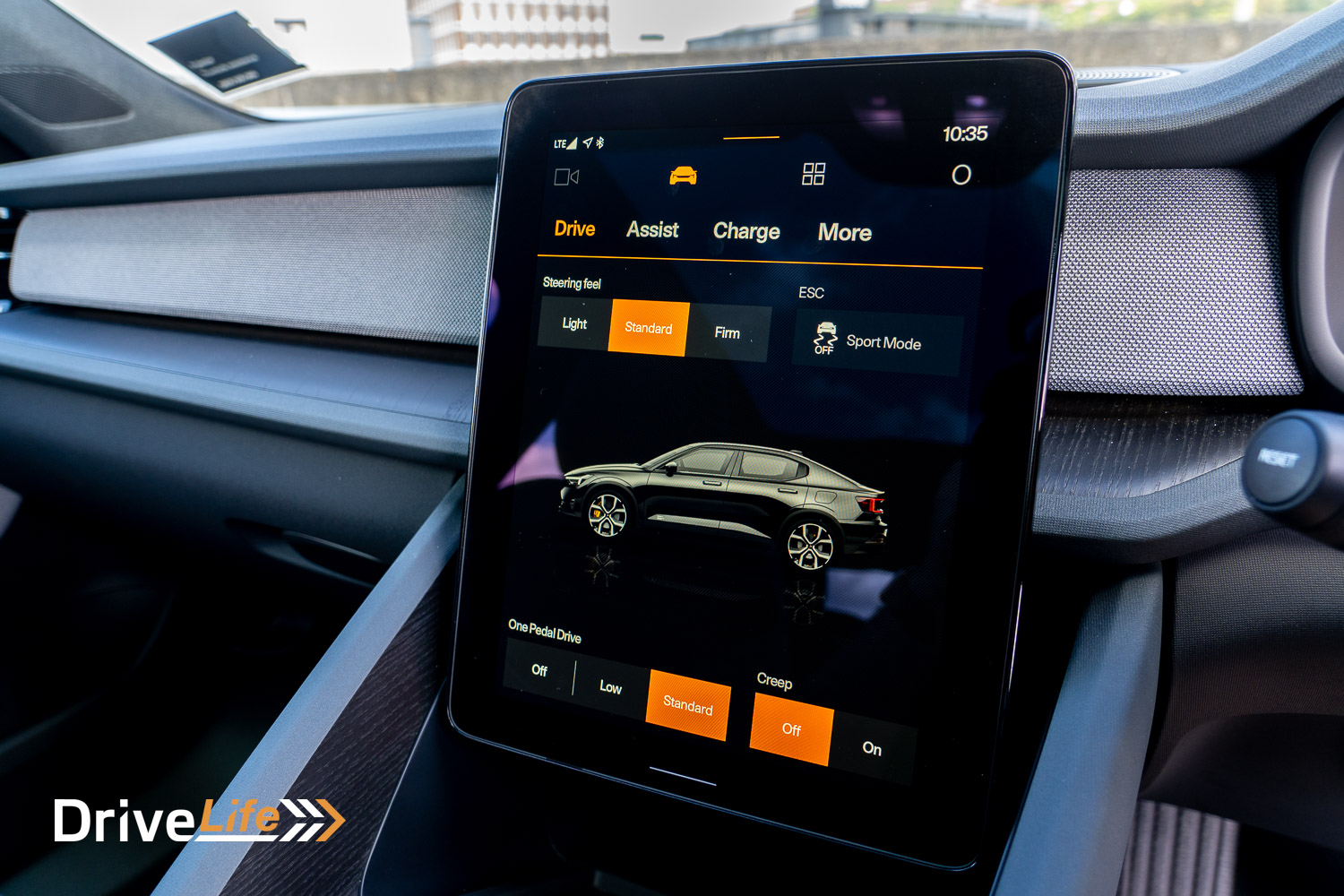
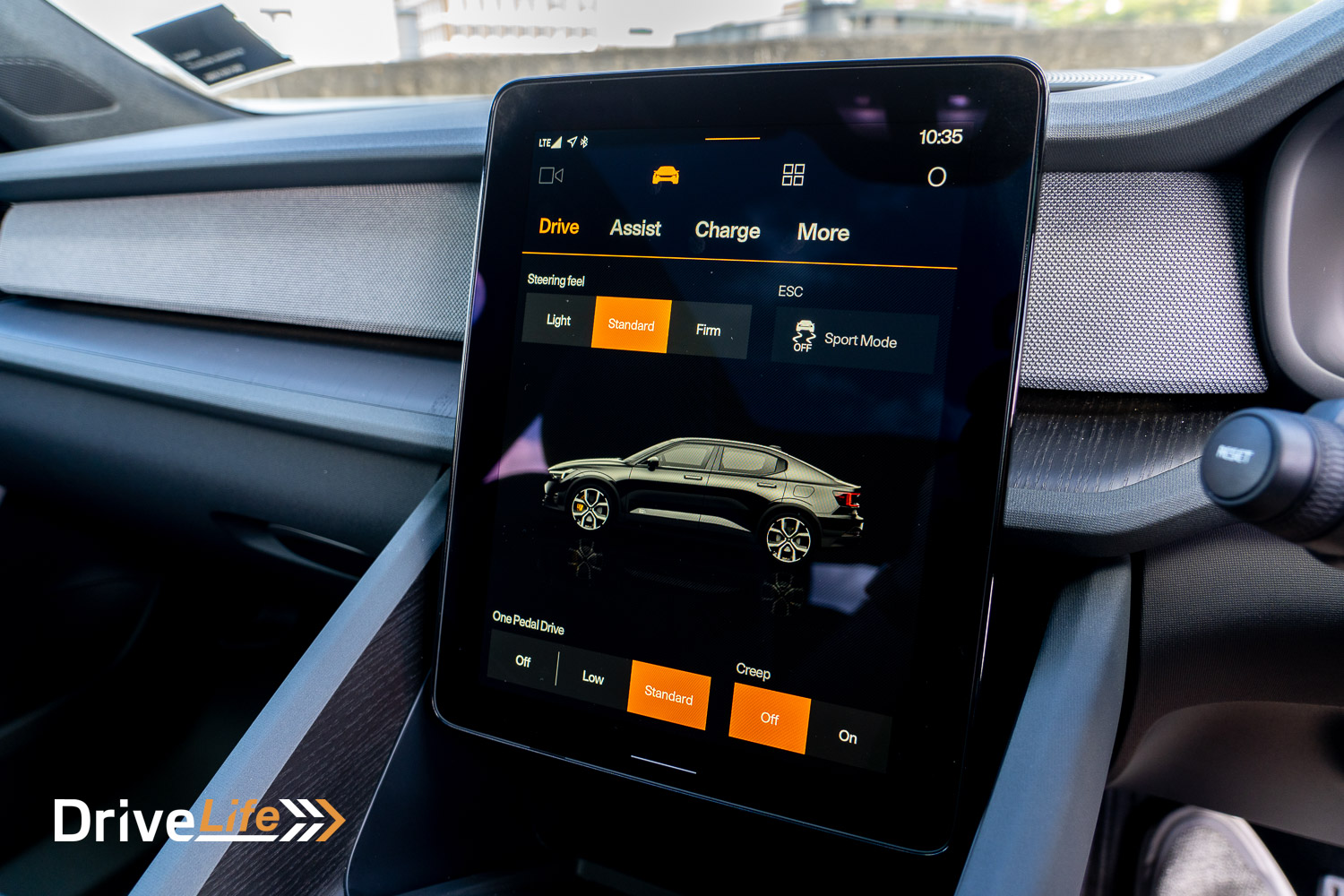
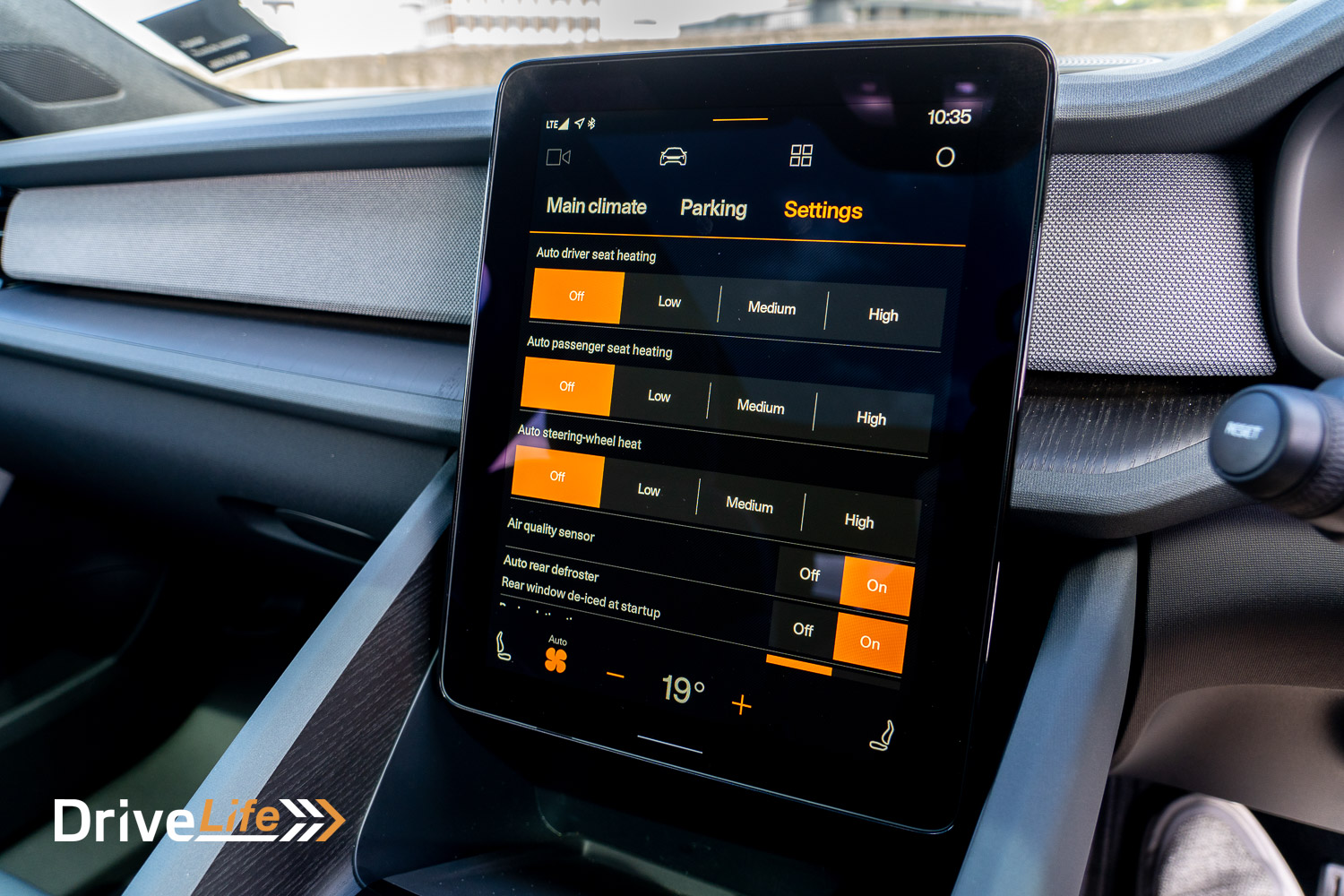
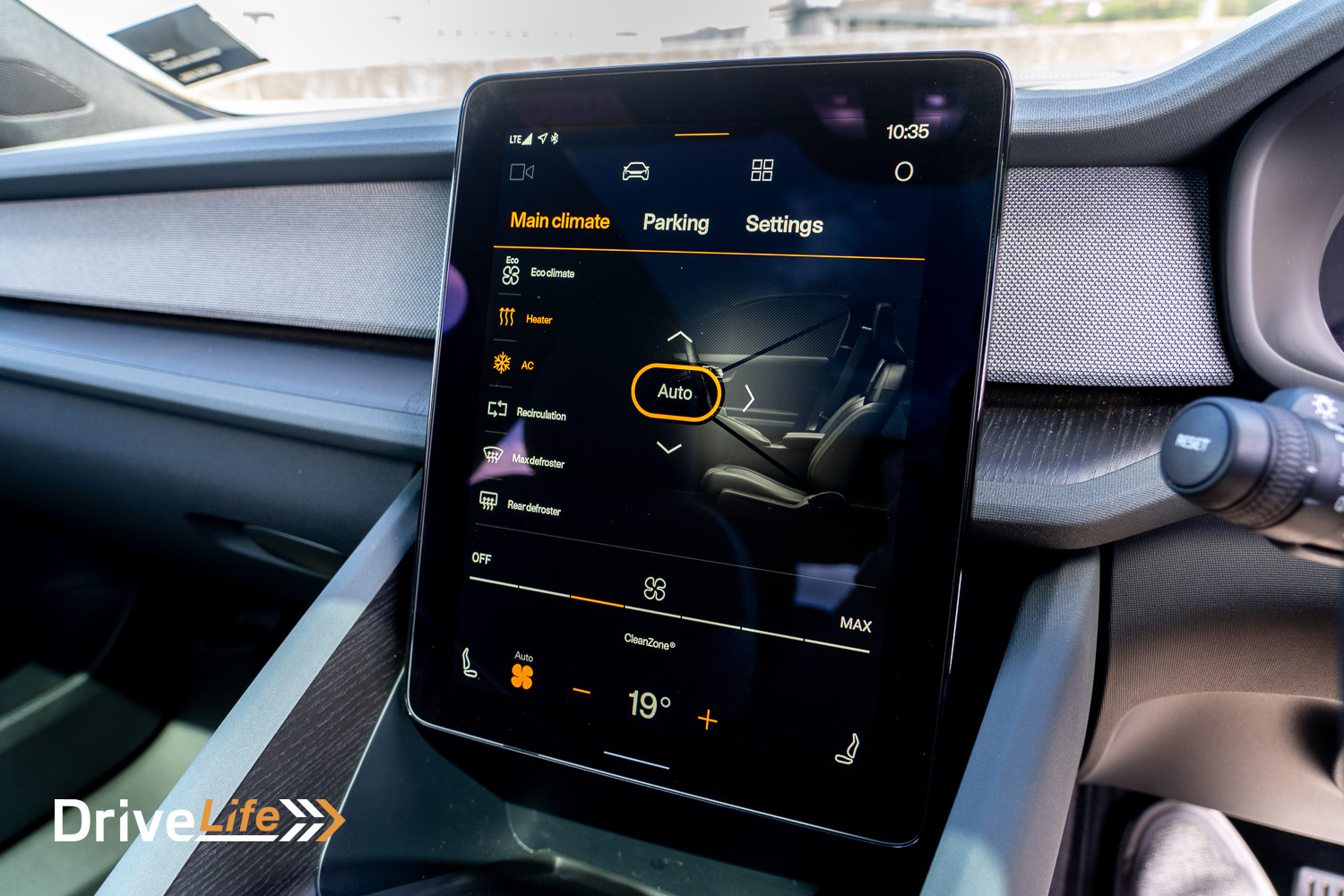
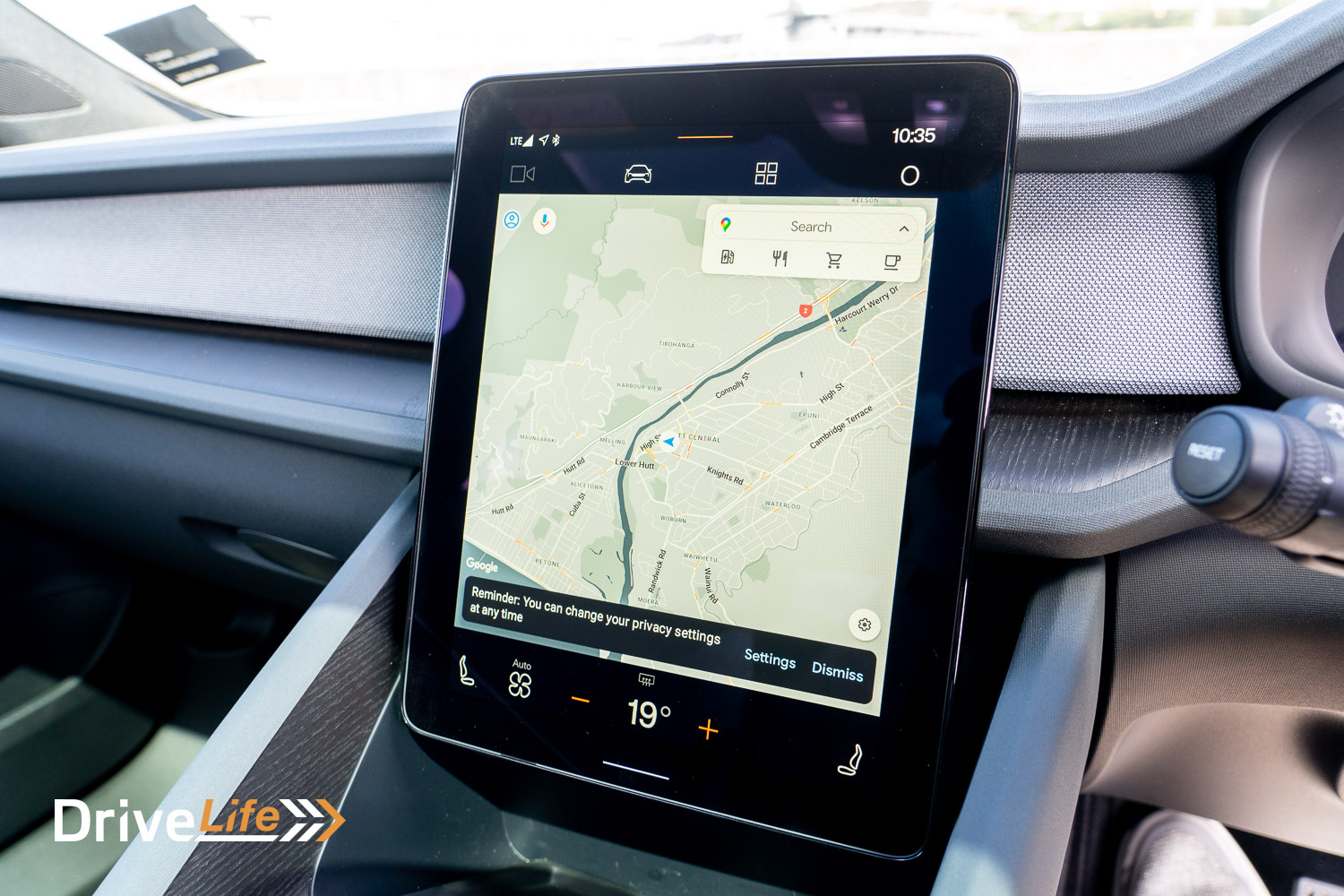
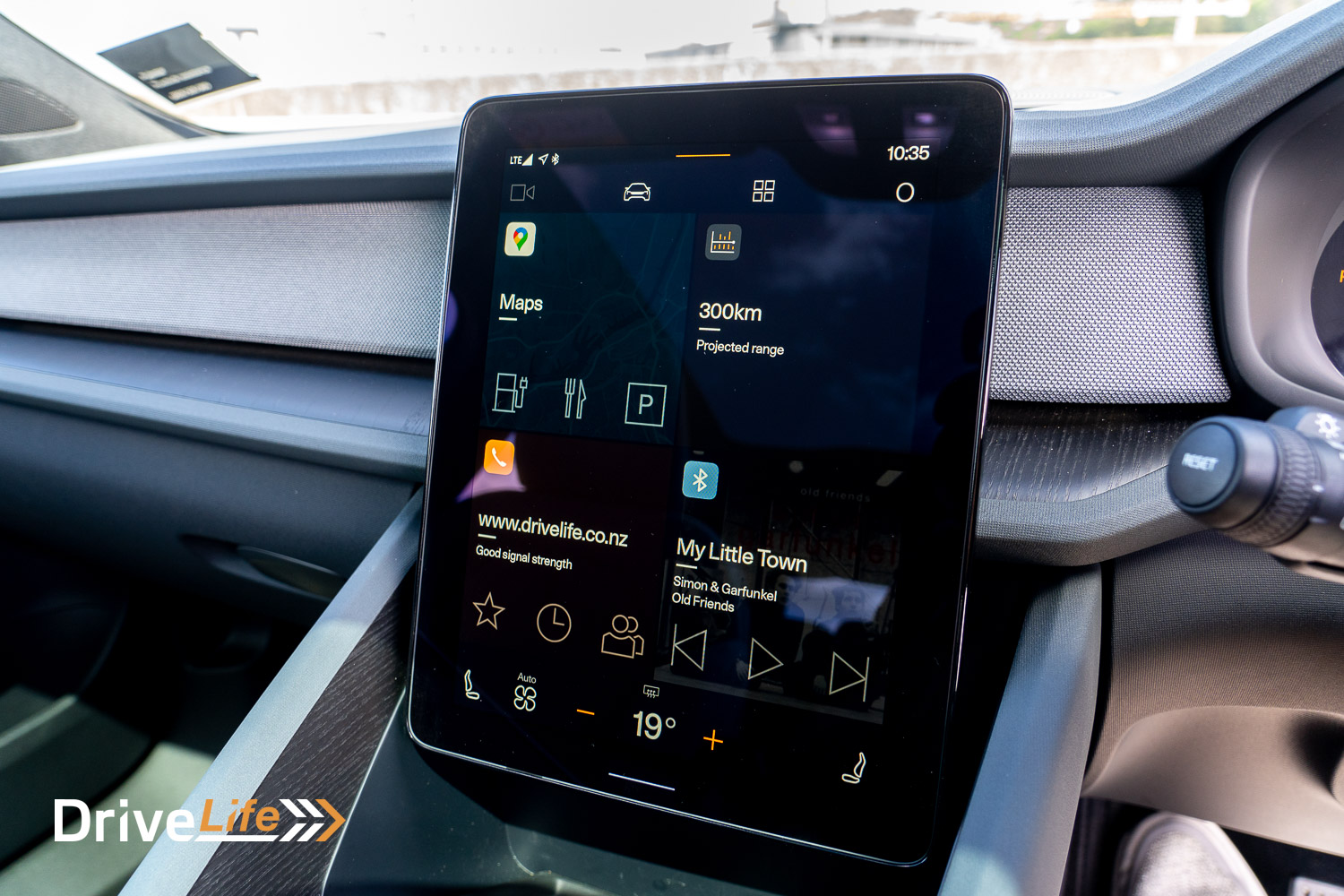
On the open road, there is minimal wind, tyre or road noise. It’s not a silent ride, but extraneous noises are well subdued. If you want some noise, you could always crank up that 600-watt Harmon Kardon sound system. There are a lot of settings you can tweak if that’s your thing, and the sound quality is excellent overall.
The dashboard is a 12.3” digital unit of superb clarity. You don’t get any customisation of the dashboard, but you can hit a button to get an almost full-screen view of Google Maps. The essential information is given to the driver. Like the interior, it’s very minimalist – but clear and concise.
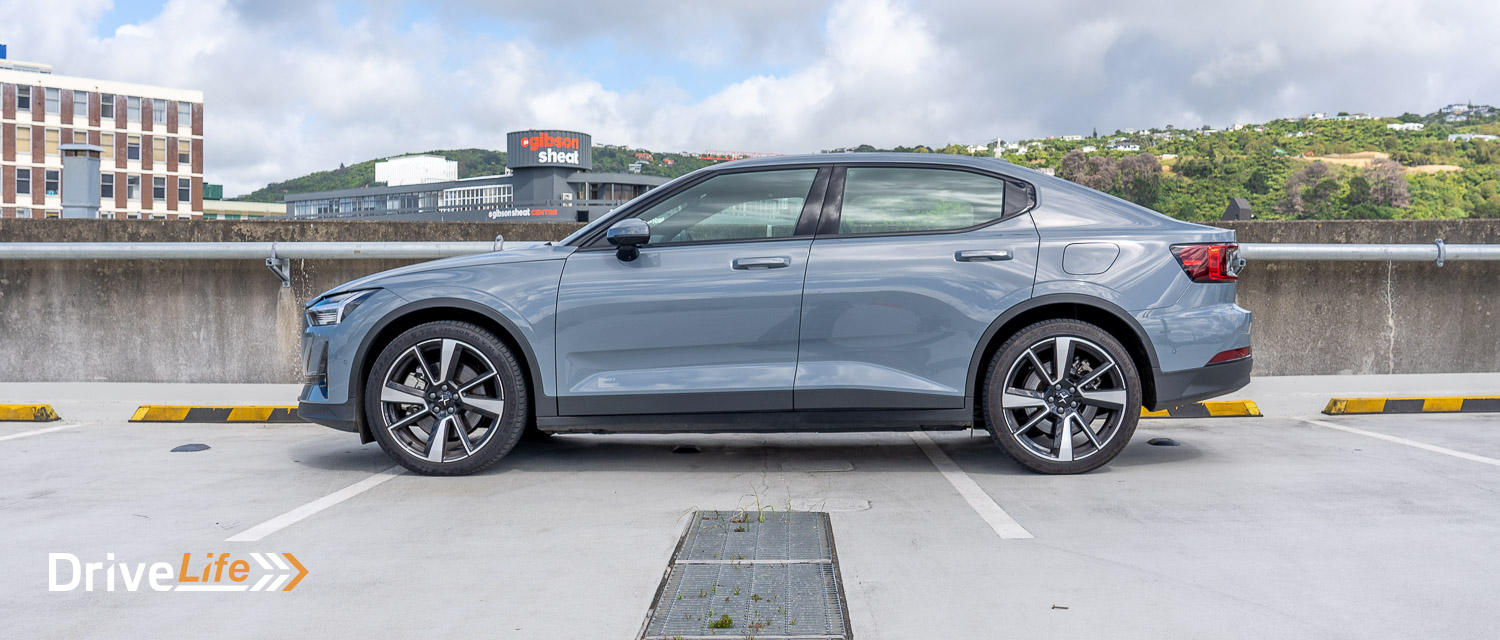
Not so concise is the Traffic Sign Recognition (TSR). I doubt it’s related to the worldwide semiconductor shortage (or maybe it is) but the TSR was not very accurate. We’ve had a string of cars lately that had the same issue, so it’s not Polestar-specific.
If I wanted to seesaw between good and not-so-good points, I’d mention next that it made my day each time I drove the Polestar 2 that my phone connected via Bluetooth almost instantly, on getting in the car. Like TSR, we’ve had a run of cars lately that have dodgy Bluetooth, but not the Polestar 2, connecting each and every time before I even put the car into gear. Awesome.
Along the centre console, there’s a ridge where two plastics meet, joining the top and bottom of the centre console. There’s no padding, so they are two pieces of hard plastic that my knee rested against each and every drive. With no padding, I ended up with a ridge on the side of my kneecap. Not fun. Hopefully, this gets resolved in an update, but if it were my Polestar 2, I’d be glueing a piece of padding there.
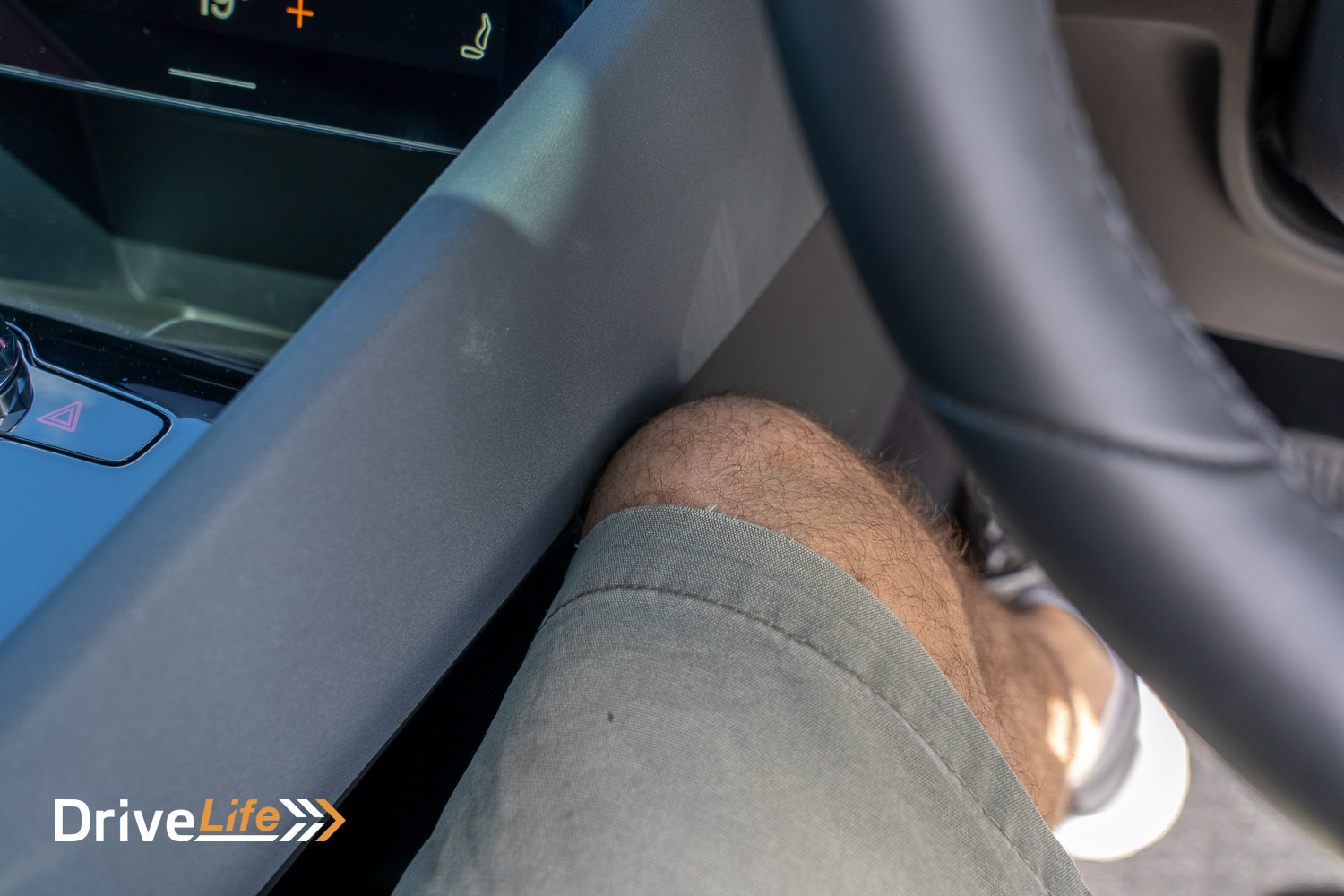
And we’re back to the next awesome thing – the headlights. They’re adaptive and Pixel LED when you have the Pilot Lite pack, and they are brilliant. A hugely wide spread of light and piercing deep into the night.
I had to take the Polestar 2 across to the Wairarapa for a trip and it performed brilliantly. With adaptive cruise control with stop/go functionality, the ease of driving on the open road is excellent, and of course, there’s that 660Nm of torque to help the drive. The Remutaka Hill was all too easy, with gallons of torque to punch the car out of the corners. This is where it feels like the Polestar 2 is more of an open-road car than a Daily Driver, spending most of its time in the city or on the motorway. I found the handling on tight corners in the dry great, except for that tendency for the front to run wide at the limit.
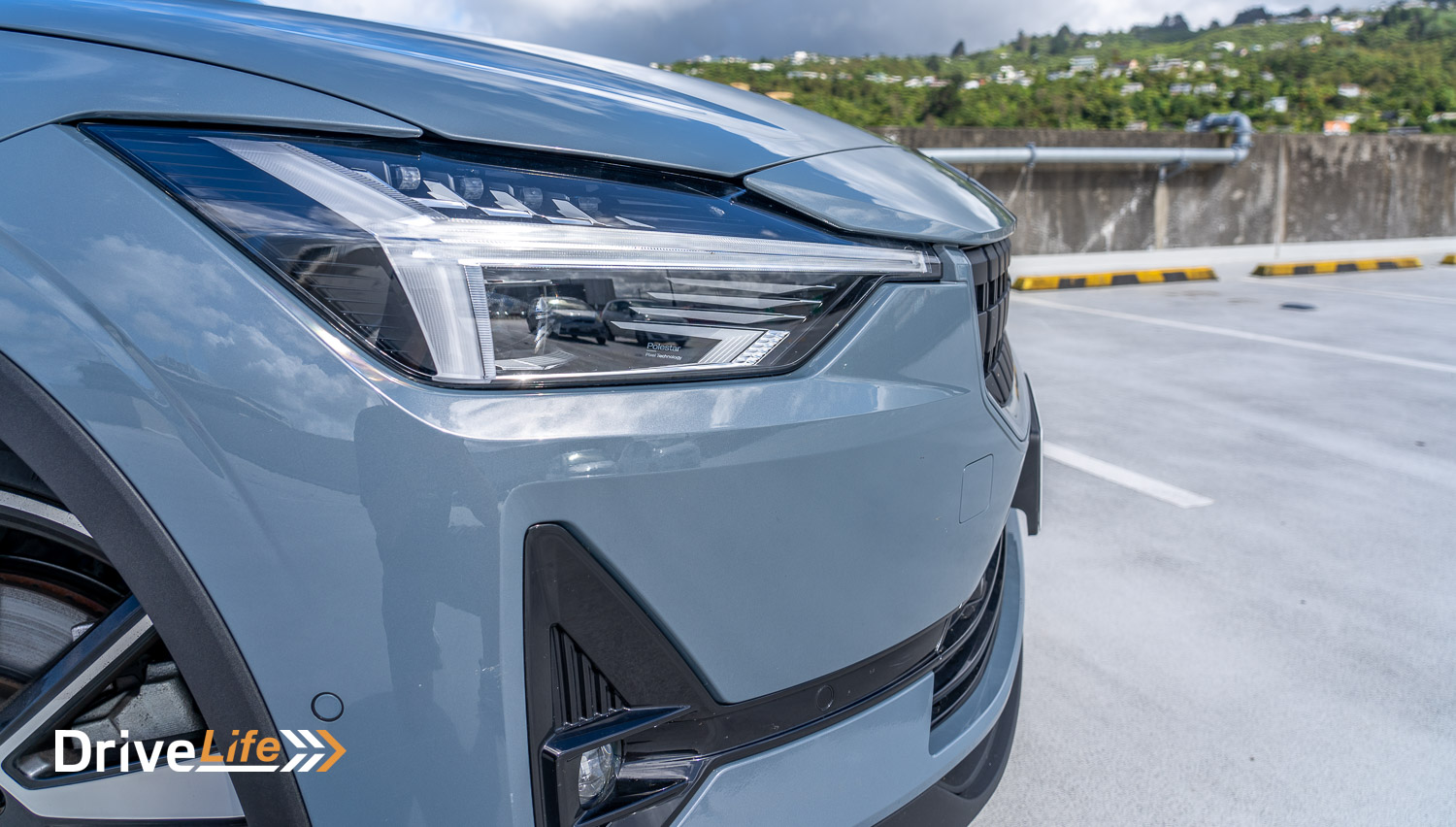
The steering wheel controls look haptic, but don’t freak out – they’re not. You still need to push them down to use them, and it’s not long before there’s no longer a need to look at the buttons at all. All very Swedish in design.
EV-wise, the car will take a maximum charge of 151kW. In Wellington, our gruntiest non-Tesla charger is 50kW, so that’s a bit wasted. Still, you really need those hyperchargers when away from home, so the Polestar 2 has your back. For my own time with the car, I just plugged it into a standard 230-volt power point and let it charge overnight. We often get asked how long it takes to charge a car, and it’s around 30 seconds; plug it in and walk away. Well, when you are at home, at least.
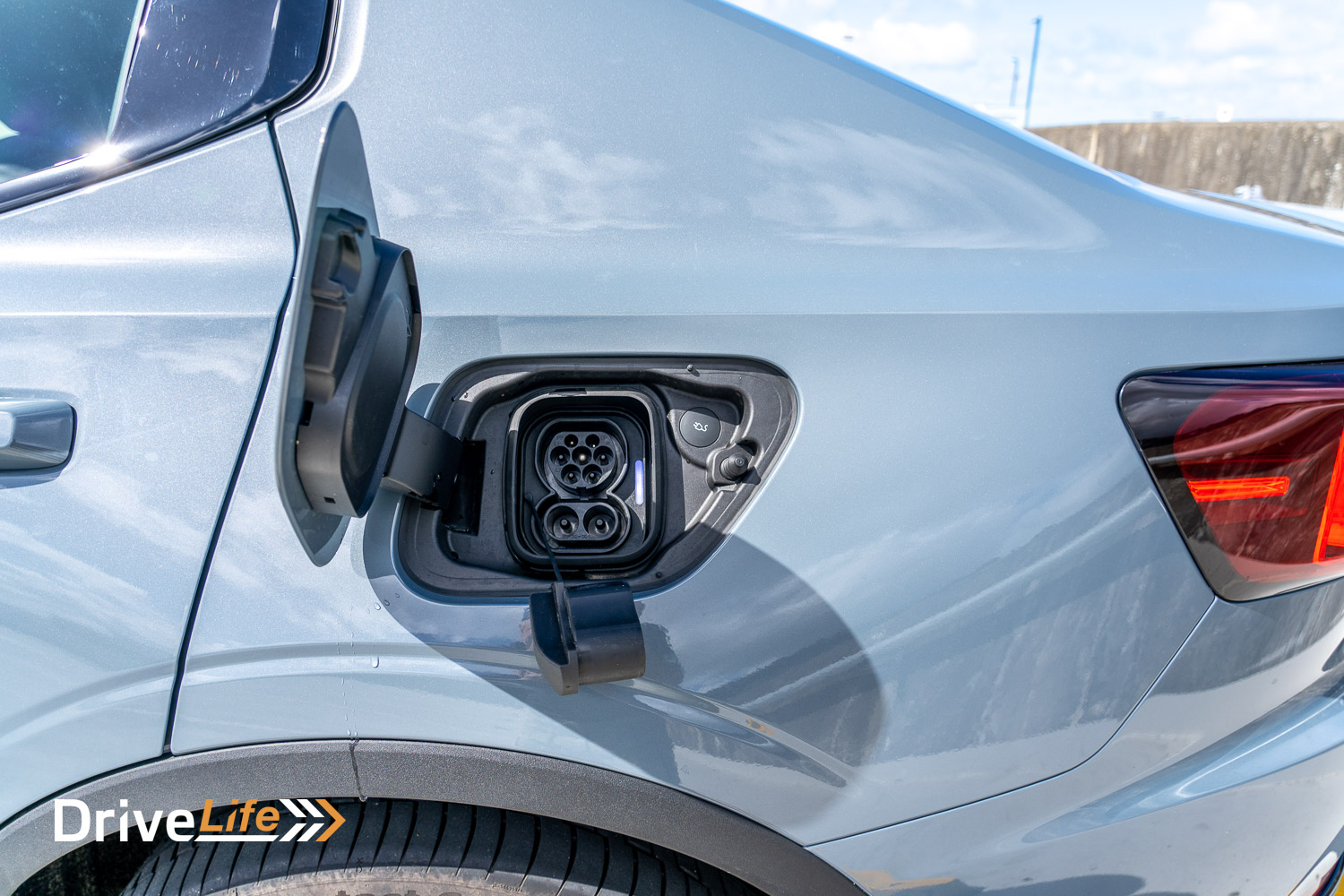
Between Alistair and myself testing the Polestar 2, we managed to cover 848km and the car returned 21.9kWh/100km in energy economy. That’s a bit more than the 19.0 that Polestar suggests, and a reasonable amount more than the 16.0 we got from the Telsa Model 3 Long Range.
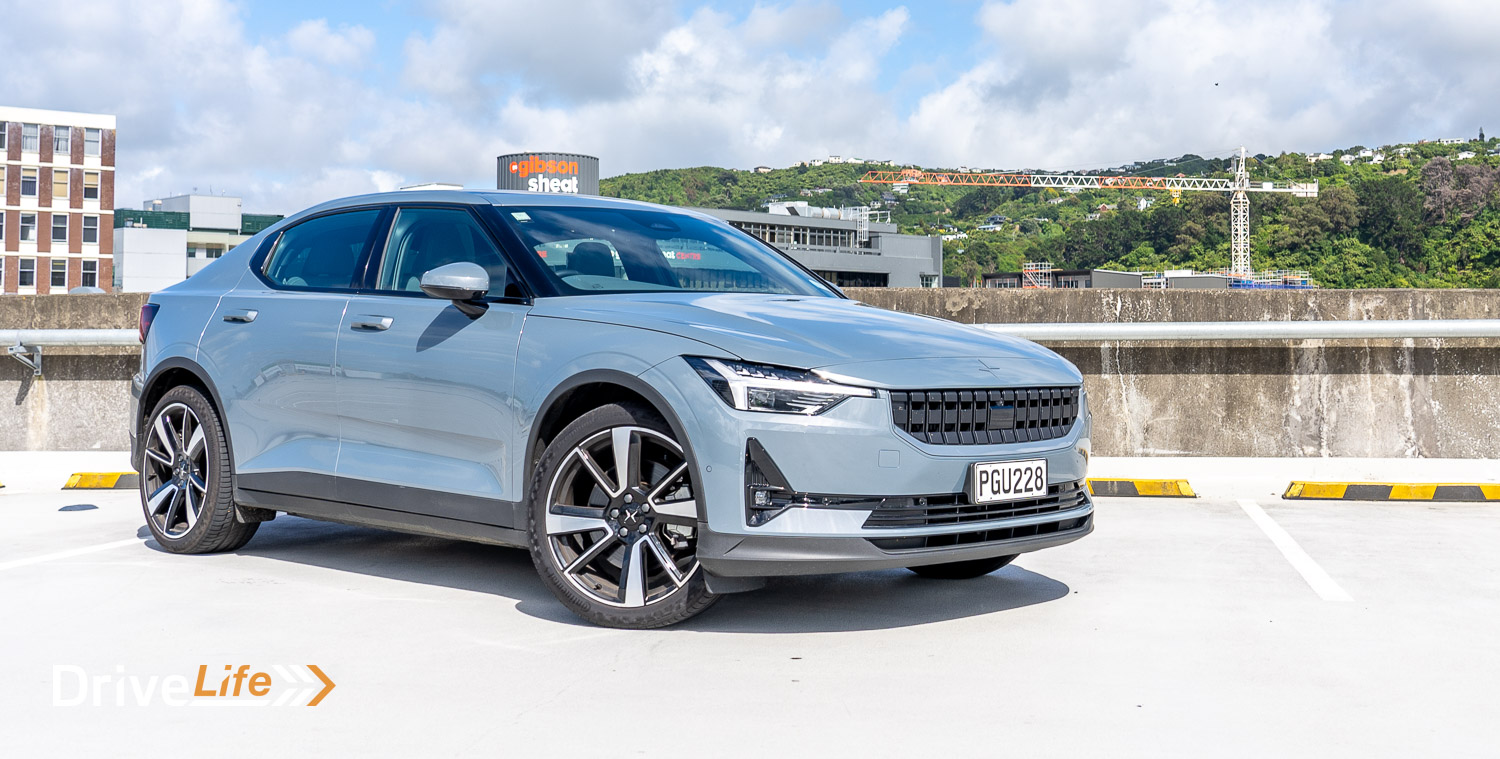
2022 Polestar 2 Long Range Dual Motor – Specifications
| Vehicle Type | Large 5-door Hatchback EV |
| Starting Price | $104,900 |
| Price as Tested | $104,900 |
| Engine | Dual 150kW electric motor |
| Power, Torque kW/Nm | 300/660 |
| Transmission | – |
| Spare Wheel | Tyre repair kit |
| Kerb Weight, Kg | 2,198 |
| Length x Width x Height mm | 4606x4859x1985 |
| Boot Space / Cargo Capacity, Litres (seats up/seats down) | 405/1,095 |
| Energy Economy, kWh/100km | Advertised Spec – Combined – 19.0 Real-World Test – Combined – 21.9 Low Usage: 6-10 / Medium Usage 11-19 / High Usage 19+ |
| Towing Capacity Kg, unbraked/braked | 750/1,500 |
| Turning circle metres | 11.3 Small: 6-10m / Medium 10-12m / Large 12m+ |
| Warranty | 3 Years servicing 3 Years Vehicle Warranty 8 Years 160,000km Battery Warranty 3 Years Roadside Assistance 3 Years Connected Services 12 Years Body Warranty |
| Safety information | ANCAP Rating – 5 stars – Link Rightcar.govt.nz – 5 Stars – PGU228 |
Have you enjoyed this review? Be sure to join our monthly email newsletter list so you don’t miss a single car review!


